JavaScript seems to be disabled in your browser. For the best experience on our site, be sure to turn on Javascript in your browser.
- Compare Products
ALL THE SUPPLIES YOU NEED TO GET YOUR BOAT BACK IN THE WATER ARE 10% OFF NOW! DISCOUNT APPLIED AT CHECKOUT

781-246-7401

Product Search
Proceed to checkout.

Sailboats vs. Powerboats: Which is Right for You?
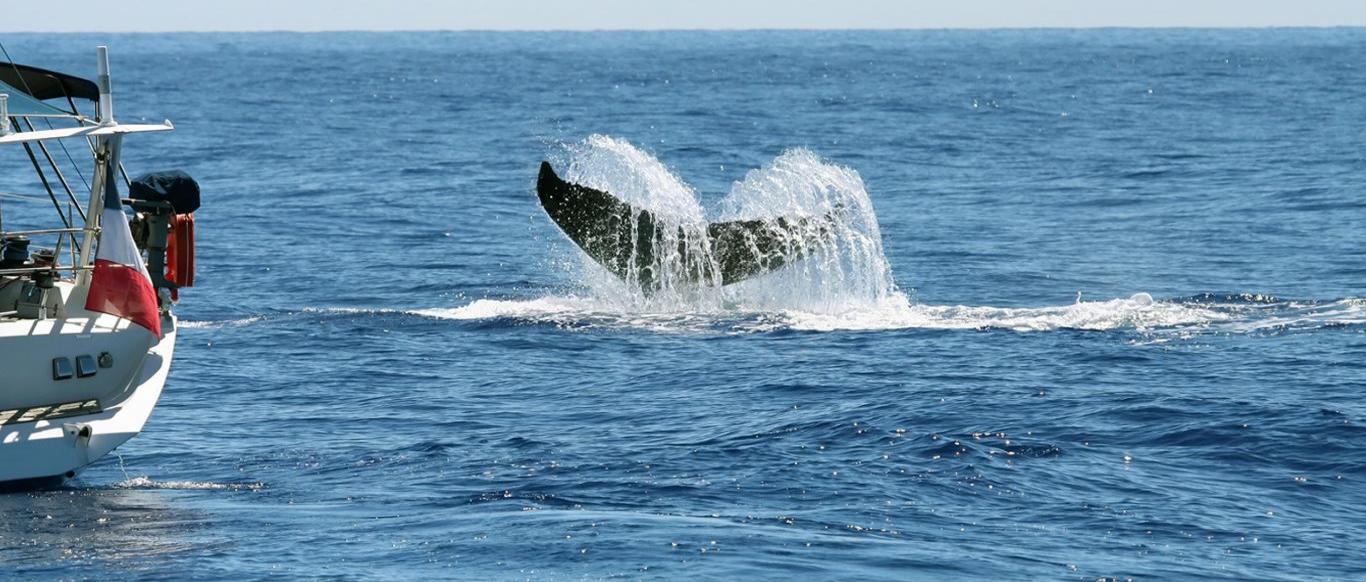
- Back to Blog
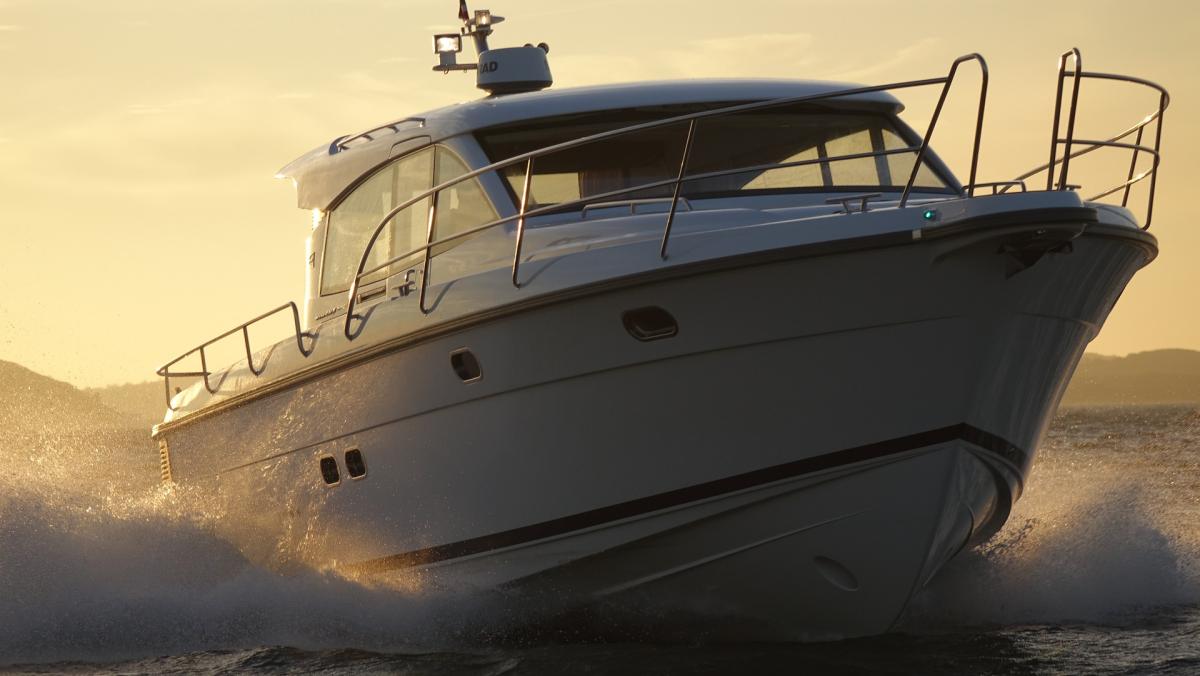
When considering the purchase of a boat, one of the most important decisions you will face is whether to choose a sailboat or a powerboat. Both types of boats offer their own unique advantages and disadvantages, and the right choice will ultimately depend on your personal preferences, boating needs, and budget. This article will provide an in-depth and comprehensive comparison of sailboats and powerboats, discussing the key differences, pros and cons, and factors to consider when making your decision.
Sailboats: Harnessing the Wind
Sailboats, as the name suggests, rely on wind power to propel them through the water. They typically feature a mast, sails, and a keel to provide stability and balance. Sailboats come in a variety of sizes and configurations, from small dinghies to large yachts and cruising vessels. Some of the main advantages of sailboats include:
- Fuel Efficiency: Since sailboats primarily rely on wind power, they are generally more fuel-efficient than powerboats, which rely on gasoline or diesel engines. This can lead to significant cost savings over time, especially for those who plan on spending a lot of time on the water.
- Environmental Friendliness: Sailboats produce fewer emissions than powerboats due to their reliance on wind power, making them a more environmentally friendly choice for boating enthusiasts who prioritize sustainability.
- Tranquility and Connection to Nature: Many sailors appreciate the quiet, peaceful experience of sailing, as well as the opportunity to connect with nature and develop a deeper understanding of the wind and weather.
- Skill Development and Challenge: Sailing requires a unique set of skills and knowledge, and mastering these can be both rewarding and challenging. Many sailors enjoy the sense of accomplishment that comes from learning to harness the wind and navigate their vessels efficiently.
However, sailboats also have some disadvantages, including:
- Dependence on Wind: Sailboats rely on wind conditions to travel, which can be unpredictable and inconsistent. This means that sailors may need to be more flexible in their travel plans and may occasionally need to rely on auxiliary engines when wind conditions are unfavorable.
- Slower Speeds: Generally, sailboats travel at slower speeds than powerboats, which may be a drawback for those who prioritize speed and efficiency.
- Learning Curve: Sailing can have a steeper learning curve compared to operating a powerboat, and new sailors may need to invest more time and effort in learning the necessary skills.
Powerboats: Speed and Versatility
Powerboats, as the name implies, are propelled by engines that use gasoline or diesel fuel. They come in a wide variety of sizes and styles, from small runabouts and fishing boats to large yachts and cabin cruisers. Some of the main advantages of powerboats include:
- Speed and Efficiency: Powerboats can typically travel at faster speeds than sailboats, making them ideal for those who want to cover greater distances in a shorter amount of time.
- Versatility: Powerboats are often more versatile than sailboats, as they can be used for a variety of activities, including water sports, fishing, and recreational cruising.
- Easier Operation: Operating a powerboat generally requires less skill and knowledge compared to sailing, making it more accessible for beginners and those with limited boating experience.
- More Predictable Performance: Unlike sailboats, powerboats are not dependent on wind conditions for propulsion, which can provide more predictability and control when navigating.
However, powerboats also have some disadvantages, including:
- Fuel Costs and Environmental Impact: Powerboats consume more fuel than sailboats, which can result in higher operating costs and a greater environmental impact due to emissions.
- Noise: Powerboats tend to be louder than sailboats, which may be a drawback for those seeking a quiet and peaceful boating experience.
- Maintenance: Powerboats typically require more maintenance than sailboats, particularly when it comes to engine upkeep. This can result in additional time and expense for boat owners.
Sailboats vs. Powerboats: Factors to Consider
When deciding between a sailboat and a powerboat, there are several factors to consider, including:
- Budget: Both the initial purchase price and ongoing operating costs should be taken into account when choosing between a sailboat and a powerboat. While sailboats may have lower fuel costs, they can sometimes be more expensive to purchase, especially when considering larger models. Additionally, sailboats may require more specialized maintenance, which can add to overall expenses.
- Purpose: Consider the primary activities you plan to use your boat for, such as cruising, racing, water sports, or fishing. Powerboats are generally more versatile and better suited for a wider range of activities, while sailboats are more focused on the sailing experience itself.
- Experience and Skill Level: Your boating experience and skill level may also play a role in your decision. If you are new to boating or prefer a more straightforward experience, a powerboat may be a better choice. However, if you are willing to invest the time and effort in learning to sail, a sailboat can offer a rewarding and challenging experience.
- Speed and Travel Range: If speed is a priority for you, a powerboat is likely the better option. Powerboats can cover greater distances in less time compared to sailboats. However, if you prefer a more leisurely pace and the opportunity to connect with nature, a sailboat may be more appealing.
- Aesthetics and Lifestyle: The aesthetics and lifestyle associated with each type of boat may also influence your decision. Some individuals prefer the sleek lines and modern appearance of powerboats, while others are drawn to the classic elegance and tradition of sailboats.
In conclusion, the choice between a sailboat and a powerboat will ultimately depend on your personal preferences, boating needs, and budget. Sailboats offer a more environmentally friendly and serene boating experience, with the added challenge of mastering the art of sailing. Powerboats, on the other hand, provide speed, versatility, and easier operation. By carefully considering the factors discussed in this article, you can make an informed decision and choose the boat that is right for you.
- The Importance of Proper Boat Shoes
- Top 10 Weather Apps for your Next Boating Adventure
- Should You Finance or Pay Cash for Your Dream Boat?
- Level Up Your Aquatic Lifestyle: Popular Boat Mods for 2024
- The Future is Now: Boating's Cutting-Edge Trends for 2024

The Ultimate Guide: The Cost to Maintain a Sailboat Explained
Alex Morgan
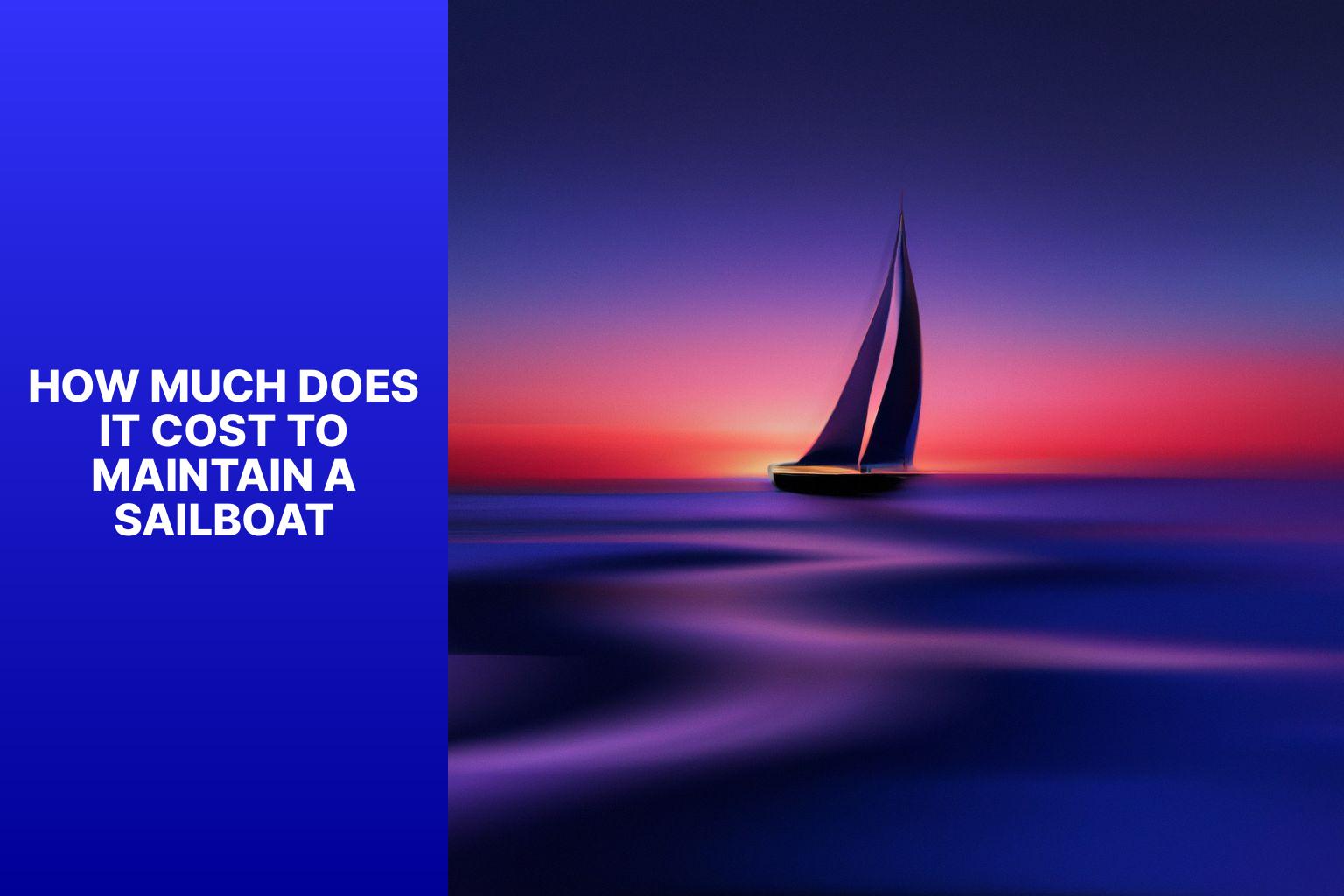
Maintaining a sailboat involves several factors that contribute to the overall costs. Whether you own a small sailboat for recreational purposes or a larger vessel for extended cruising, understanding the various aspects of sailboat maintenance costs is crucial. Here are the factors to consider when estimating the cost of sailboat maintenance:
1. Size and Type of Sailboat: The size and type of sailboat play a significant role in determining the maintenance costs. Larger sailboats often require more expensive equipment, larger haul-out facilities, and more extensive repairs.
2. Age and Condition of Sailboat: Older sailboats may require more frequent repairs and maintenance due to wear and tear. The overall condition of the sailboat affects the costs associated with routine maintenance and necessary upgrades.
3. Location and Mooring Fees: The location of your sailboat and mooring fees can vary greatly. Marina fees can be a significant expense, especially in popular sailing destinations.
4. Insurance Costs: Insurance is necessary to protect your sailboat from potential damages. The cost of insurance depends on factors such as the sailboat’s value, coverage options, location, and your sailing experience.
5. Regular Maintenance and Upkeep: Routine maintenance tasks, such as cleaning, bottom cleaning, sail inspection, and engine servicing, are essential for the longevity of your sailboat. These costs may vary depending on the size and complexity of your vessel.
6. Marina or Boatyard Fees: Marina or boatyard fees are associated with docking your sailboat and accessing necessary facilities and services. These fees can include amenities like electricity, water, showers, and waste disposal.
7. Fuel and Docking Fees: Fuel costs and docking fees are additional expenses to consider, especially during extended cruising or traveling to different marinas.
8. Equipment and Spare Parts: Sailboats require various equipment and spare parts, including sails, rigging, navigation systems, safety equipment, and maintenance tools. These costs can add up, particularly for older sailboats.
9. Haul Out and Bottom Painting: Hauling out your sailboat for maintenance tasks such as bottom painting, inspecting and repairing the hull, and replacing zinc anodes can be a significant expense.
10. Professional Services: Hiring professional services for sailboat maintenance, repairs, and upgrades can contribute to overall costs. Services may include sail repairs, rigging inspections, engine repairs, and electrical system maintenance.
11. Winterization and Storage: Winterization costs and storage expenses should also be factored in if you live in a climate with harsh winters. Properly preparing your sailboat for winter and storing it securely ensures its longevity.
12. Unexpected Repairs: Unexpected repairs can occur at any time, and their costs can significantly impact your budget. Having a contingency fund for unexpected repairs is essential.
While sailboat maintenance costs can add up, there are ways to minimize expenses. Regularly maintaining your sailboat, performing minor repairs yourself, comparing prices for equipment and services, and being proactive in addressing maintenance issues can help reduce costs in the long run.
By considering these factors and implementing cost-saving strategies, you can estimate and manage your sailboat maintenance expenses more effectively.
Key takeaway:
- Size and type of sailboat impact maintenance costs: The size and type of sailboat can greatly affect the cost of maintenance. Larger boats with complex systems may require more upkeep and expenses compared to smaller, simpler sailboats.
- Location and mooring fees add to maintenance costs: The location and mooring fees for a sailboat can contribute significantly to the overall maintenance costs. It’s important to consider the expenses associated with keeping the boat in a marina or other designated areas.
- Regular maintenance reduces long-term costs: Regular maintenance and upkeep of a sailboat can help prevent major issues and costly repairs in the future. Performing routine checks, cleaning, and servicing can extend the lifespan of the boat and save money in the long run.
Factors to Consider for Sailboat Maintenance Costs
Considering the factors that influence sailboat maintenance costs can save you from any unexpected financial waves. From the size and type of sailboat to insurance costs and regular upkeep, each aspect contributes to the overall expenditure. Whether you’re a seasoned sailor or a novice, understanding the impact of factors such as age, location, and professional services is essential for budgeting effectively. So, let’s dive into the depths of sailboat maintenance costs and discover what lies beneath the surface.
Size and Type of Sailboat
- The size of your sailboat will affect the amount of maintenance required. Larger sailboats typically have more equipment and systems onboard, which can increase maintenance needs. On the other hand, smaller sailboats are generally easier and cheaper to maintain.
- The type of sailboat you own or are interested in will also play a role in maintenance requirements. Different sailboat types have different upkeep needs. For instance, a monohull sailboat may have different maintenance demands compared to a catamaran. Consider the type of sailboat when assessing maintenance costs.
To minimize sailboat maintenance expenses, it is important to regularly clean and inspect your vessel. Regular cleaning of the hull and deck helps prevent the accumulation of algae, barnacles, and other marine growth, which can lead to costly repairs. Make sure to inspect your sailboat for any signs of damage or wear, and promptly address any issues to avoid more expensive fixes.
Age and Condition of Sailboat
When considering the age and condition of a sailboat, several factors should be kept in mind:
Hull Integrity: The hull’s age and condition are crucial. Look for damage such as cracks, blisters, or delamination, which can be costly to repair and may indicate structural problems.
Rigging: Inspect the standing and running rigging for signs of wear and damage. Check the mast, boom, and rigging components’ condition. Replace any worn or damaged parts for safe sailing.
Sails: Examine the sails for wear, tear, or UV damage. Older sails may have reduced performance and might need replacement. Consider the cost of sail repairs or replacements when evaluating overall maintenance costs.
Mechanical Systems: Assess the age and condition of the engine, plumbing, electrical systems, and other mechanical components. Older boats may require more frequent repairs or upgrades for proper functioning.
Interior and Exterior Upkeep: Evaluate the cleanliness and maintenance of the boat. Look for leaks, mold, or rot. Consider refurbishing or upgrading the amenities if needed.
Previous Maintenance: Review the sailboat’s maintenance records to understand its past care. Regular maintenance and proper upkeep significantly impact a sailboat’s longevity and cost.
By considering a sailboat’s age and condition, informed decisions about repairs, upgrades, and overall maintenance costs can be made. Ensuring the sailboat’s good condition is essential for safety and enjoyment on the water.
Location and Mooring Fees
Location and mooring fees are crucial considerations for the upkeep of a sailboat. These fees are influenced by factors such as the sailboat’s location, the popularity of the marina, and the size of the boat.
To illustrate the range of fees for different sailboat sizes at renowned marinas, refer to the table below:
Please note that these figures are approximate and can vary depending on the specific marina and the amenities it provides. Additional charges may apply for services such as electricity, water, and Wi-Fi.
To make an informed decision about selecting the most suitable marina for your sailboat, conduct thorough research and compare different options in your desired location. Take into account factors such as location, mooring fees, and other relevant considerations to effectively plan and budget for sailboat maintenance.
Insurance Costs
Insurance costs play a significant role in maintaining a sailboat. Insuring your sailboat is crucial to safeguard your investment and ensure peace of mind while on the water. Various factors, including sailboat size, type, age, condition, and location, can affect the cost of insurance.
The size and type of the sailboat directly impact insurance costs. Larger sailboats , owing to their higher value and potential risks, typically come with higher insurance premiums. The type of sailboat, whether it’s a mono-hull or a catamaran , can also influence insurance expenses.
Considering the age and condition of the sailboat is crucial. Newer sailboats often have higher insurance costs due to their increased value and potential for costly repairs. Well-maintained older sailboats may attract lower insurance costs.
The sailboat’s location and mooring fees are significant factors in determining insurance costs. Insurers take into account geographical risk elements such as weather conditions and the likelihood of theft.
It is vital to note that insurance costs can vary depending on the chosen provider and coverage options. Factors such as the deductible, liability limits, and additional coverage for equipment or personal property can impact the overall insurance expenses.
To determine the specific insurance costs for your sailboat, it is recommended to contact insurance providers and request quotes based on your unique needs and sailboat details.
Regular Maintenance and Upkeep
Regular maintenance and upkeep are essential for maintaining a sailboat and preventing expensive repairs in the long term. Regularly inspect the hull and deck for damage or wear and address any issues promptly. Clean the boat regularly to remove dirt, grime, and salt deposits that can cause damage over time. Check and replace the sailboat’s lines and rigging as needed to ensure safety and proper functionality. Maintain the engine and other mechanical systems regularly by changing the oil, filters, and spark plugs according to the manufacturer’s recommendations. Keep the bilge clean and free of debris to avoid water damage and ensure proper drainage. Inspect and maintain the electrical system, including batteries, wiring, and lights. Check and maintain safety equipment, such as life jackets, fire extinguishers, and flares, to ensure they are in working order and up to date. Regularly check and service the boat’s navigational and communication equipment, including GPS, radios, and radar. Check and maintain plumbing systems, including fresh water tanks, pumps, and faucets.
Regular maintenance and upkeep are essential to keep your sailboat in excellent condition and ensure safe and enjoyable sailing experiences. In history, sailor John Smith followed a regular maintenance and upkeep routine for his sailboat. He inspected the hull and deck for damage, taking immediate action to prevent further deterioration. Smith kept his sailboat clean, removing dirt and salt deposits. He also checked and replaced any frayed or damaged lines. Smith’s dedication to inspecting and maintaining the engine and other systems paid off, as his sailboat always performed well. By regularly checking and servicing safety equipment, navigational systems, plumbing, and electrical components, Smith ensured a safe and worry-free sailing experience. Thanks to his commitment to regular maintenance and upkeep, Smith’s sailboat remained in excellent condition and provided him with many memorable adventures at sea.
Marina or Boatyard Fees
Marina or boatyard fees play a crucial role in the upkeep of a sailboat. These fees can vary depending on the location and the range of services offered. Marinas typically charge monthly or annual fees for mooring, and the cost can vary from hundreds to thousands of dollars. The exact amount hinges on factors such as the size and type of the sailboat.
Apart from the mooring fees, marinas may also impose charges for haul out and bottom painting . Hauling out incurs a separate fee, covering inspections, repairs, or general maintenance. Bottom painting serves as a protective measure for the hull but may necessitate an additional fee.
Sailboat owners can minimize their expenses by selecting a marina that offers competitive rates or by considering alternative mooring options like anchorages. Some owners even opt for DIY maintenance and repairs to save money.
Based on a survey, it is estimated that the average annual fee for a 30-foot sailboat is between $3,000 and $5,000 . Actual prices will depend on the location and the specific services provided.
Fuel and Docking Fees
Using a table, let’s break down the costs of fuel and docking fees for sailboat maintenance:
Docking fees for a sailboat usually range from $10 to $30 per foot per day. The cost depends on the size, type of sailboat, and location of the marina or harbor. It’s important to consider docking fees when planning for sailboat maintenance.
Fuel costs also play a significant role in sailboat maintenance. On average, sailboats use about 1 gallon of fuel per hour when the engine is in use. Fuel prices can vary, but the current average is around $4 per gallon. It’s essential to estimate fuel costs accurately by considering the duration and distance the sailboat will be using the engine.
Fact: Proper maintenance and care can optimize fuel efficiency and minimize fuel expenses for sailboats. Regular engine maintenance, hull cleaning, and propeller checks contribute to smoother sailing and reduced fuel consumption.
Equipment and Spare Parts
Equipment and spare parts play a significant role in sailboat maintenance. Conducting regular inspections and replacing these components is essential to guarantee the safety and proper functioning of the sailboat.
In this regard, the following table outlines the importance of such practices:
By considering these factors, sailors can ensure the longevity and efficiency of their vessels while enjoying a safe sailing experience.
Haul Out and Bottom Painting
The first step in sailboat maintenance is hauling out the boat. This involves removing the sailboat from the water and securing it on land or in a dry dock for easy access to the bottom of the boat for inspection and repairs.
Once hauled out, a thorough inspection of the hull and bottom is conducted. This includes checking for damage, such as cracks or blisters, and assessing the condition of the paint or antifouling coating.
If marine growth is present, it needs to be cleaned during the bottom painting process. This can be done by scrubbing or pressure washing the hull to remove algae, barnacles, and other organisms that negatively impact the boat’s performance.
If damage is found during the inspection, repairs should be carried out before starting the bottom painting. This may involve patching up cracks, filling holes, and replacing damaged parts.
Before starting the bottom painting process, the bottom of the boat needs to be properly prepared . This typically involves sanding or scraping off the old paint or antifouling coating to create a smooth surface for the new paint to adhere to.
Once the surface is prepared, a new coat of bottom paint or antifouling coating can be applied to prevent marine growth and keep the boat’s hull in good condition. The type of paint or coating used will depend on factors such as the boat’s material and the waters it will be sailing in.
After the paint has dried, the boat can be launched back into the water. It is important to ensure that the boat is properly aligned and balanced to ensure optimal performance.
During World War II , haul out and bottom painting played a crucial role for the military. Sailboats were used for coastal patrols, transportation, and combat. Regular haul outs and bottom painting were conducted to remove underwater obstructions and maintain smooth sailing. These maintenance efforts were vital for the safety and effectiveness of the sailboats during the war. Today, haul out and bottom painting continue to be essential for sailboat maintenance, preserving the boat’s integrity and ensuring a smooth and enjoyable sailing experience.
Professional Services
When it comes to maintaining a sailboat, it is crucial to enlist the help of professional services. These services are essential in order to keep your vessel in excellent condition . Some of the professional services to consider include:
– Inspection and Survey: Hiring a marine surveyor is highly recommended. They can identify any hidden issues or potential problems, which allows for necessary repairs or maintenance to be carried out.
– Mechanical and Electrical Services: It is important to rely on professional technicians for tasks such as engine servicing, electrical wiring, and system troubleshooting.
– Yacht Management: If you lack the time or expertise, it is advisable to seek the assistance of a yacht management company. They can oversee the maintenance of your vessel, from routine checks to coordinating repairs.
– Sail and Rigging Services: Opting for professional services in this area can greatly benefit you. They can assist with sail repairs, replacements, and tuning, ensuring optimal performance and safety.
– Painting and Refinishing: For hull painting, varnishing, and fiberglass repairs, it is best to trust professional painters and refinishers.
– Navigation and Electronics: When it comes to installation, maintenance, and troubleshooting of navigation systems and electronic equipment, professional services are highly recommended.
In order to keep costs down, it is worth considering the following tips:
– Regular Maintenance: Stay on top of routine tasks to catch any issues early on and avoid costly repairs.
– Learning DIY Skills: By developing basic DIY skills, you can handle some maintenance tasks independently and reduce the need for professional services.
– Comparing Quotes: Gathering quotes from different providers allows you to get the best value for your money.
– Preventive Measures: Taking proactive steps, such as using covers or investing in protective equipment, can help prevent common issues and minimize wear and tear.
Winterization and Storage
Winterization and storage are vital aspects of sailboat maintenance. When it comes to the winter months, it is crucial to winterize and store the boat correctly to safeguard it from harsh weather conditions. This process typically includes draining the water systems, adding antifreeze , and securing the equipment.
The cost of winterization and storage may vary depending on the size and type of the sailboat. On average, it ranges from 1% to 3% of the boat’s value. To give an example, if your sailboat is valued at $100,000 , you should anticipate spending around $1,000 to $3,000 . If you possess the necessary skills and equipment, you can minimize costs by considering storing the boat in a do-it-yourself facility.
Properly maintaining the sailboat throughout the year can contribute to reducing the risk of damage during the winter and potentially decrease storage expenses. It is important to regularly inspect and clean the boat to promptly address any maintenance issues.
By adhering to these recommendations and properly winterizing and storing the sailboat, you can preserve its condition and minimize maintenance costs in the long run.
Unexpected Repairs
Unexpected repairs can happen anytime and can be costly. Common issues include engine problems, rigging problems, and hull damage. The cost of unexpected repairs can vary depending on the extent of the damage and the required parts or labor. It is crucial to have savings or insurance coverage to handle these unexpected costs. Regular maintenance and inspections can help prevent unexpected repairs by identifying potential issues early on.
David , a sailor, embarked on a solo ocean voyage. He prepared his sailboat carefully and performed regular maintenance tasks. During his journey, he encountered a severe storm that damaged his rigging, resulting in unexpected repairs . With no other boats nearby, David used his sailing skills to navigate to safety. Once he reached land, he immediately sought a professional sailor’s assessment of the unexpected repairs. The unexpected repairs turned out to be expensive . Fortunately, David had prepared financially for such unforeseen circumstances and had enough savings to cover the costs. This experience taught him the valuable lesson of being financially prepared for unexpected repairs while sailing.
Tips for Minimizing Sailboat Maintenance Costs
When it comes to minimizing sailboat maintenance costs, there are several tips that can help you save money in the long run.
- Regular cleaning: Clean your sailboat regularly to prevent damage from dirt, salt, and other substances.
- Perform routine inspections: Check for wear and tear, cracks, leaks, and loose fittings, and address them promptly.
- Proper storage: Store your sailboat properly when not in use to protect it from the elements. Consider using a boat cover or finding secure storage.
- Regular maintenance: Keep up with oil changes, filter replacements, and sail inspections to prevent costly repairs.
- Do-it-yourself projects: Take on small repair tasks to save money on labor costs, but seek professional help for complex issues.
Pro-tip: Attend workshops or join sailing communities to educate yourself about sailboat maintenance and acquire basic repair and maintenance skills. This will help you save money and better understand your sailboat’s needs.
Some Facts About How Much Does It Cost To Maintain A Sailboat:
- ✅ The average annual maintenance cost of sailboats is between $2,000 to $3,000. (Source: improvesailing.com)
- ✅ Larger boats can cost up to $7,000 per year for maintenance, including docking and insurance fees. (Source: improvesailing.com)
- ✅ It is possible to maintain a boat for just $1,000 per year if on a budget. (Source: improvesailing.com)
- ✅ Seasonal maintenance tasks include winterizing, costing around $500 to $1,000, and winter storage at an average price of $50 per foot. (Source: improvesailing.com)
- ✅ Incidental maintenance costs may include hull repairs, electronics updates, sailboat mast replacement, and keel repairs. (Source: improvesailing.com)
Frequently Asked Questions
1. how much does it cost to maintain a sailboat on a month-to-month basis.
Living on a sailboat can have varying costs, with some people spending less than $1,000 a month and others spending upwards of $10,000. The average cost of living on a sailboat is around $2,424 per month. The biggest expense is sailboat maintenance, which can cost around $1,006 per month.
2. What are some specific maintenance costs for a sailboat?
Specific maintenance costs for sailboats include regular expenses such as hull and engine repair, as well as potential costs for replacing rigging, sails, deck hardware, and safety equipment. The frequency and cost of these maintenance tasks will depend on factors such as boat usage and age.
3. How much does it cost to replace rigging on a sailboat?
The cost of replacing rigging on a sailboat can vary depending on the size of the boat and the type of rigging required. On average, replacing standing rigging every 10 years can cost around $4,000, while replacing running rigging every 5-10 years can cost around $5,000.
4. What are the options for sailboat owners when it comes to paying taxes?
Sailboat owners typically need to pay taxes on their boats, and the specific amounts will vary by state and country. Taxes are usually calculated based on the purchase price of the boat and can range from 4-10%. Boat owners should check with their local tax authorities for more information on tax obligations.
5. What are the average sailboat maintenance costs?
The average annual maintenance cost of sailboats is between $2,000 – $3,000, but larger boats can cost up to $7,000 due to other recurring costs like docking and insurance fees. It really depends on the type of boat and its usage. For those on a budget, it is possible to maintain a boat for just $1,000 per year.
6. How can sailboat owners save on maintenance costs?
Sailboat owners can save on maintenance costs by doing as much maintenance as possible themselves, learning DIY skills, and avoiding costly gear failures. Being in a country with lower labor costs and properly maintaining the boat can help avoid expensive repairs. Regular inspections and addressing smaller issues promptly can also prevent more severe damage and costly repairs in the long run.
About the author
Leave a Reply Cancel reply
Your email address will not be published. Required fields are marked *
Save my name, email, and website in this browser for the next time I comment.
Latest posts

The history of sailing – from ancient times to modern adventures
History of Sailing Sailing is a time-honored tradition that has evolved over millennia, from its humble beginnings as a means of transportation to a beloved modern-day recreational activity. The history of sailing is a fascinating journey that spans cultures and centuries, rich in innovation and adventure. In this article, we’ll explore the remarkable evolution of…

Sailing Solo: Adventures and Challenges of Single-Handed Sailing
Solo Sailing Sailing has always been a pursuit of freedom, adventure, and self-discovery. While sailing with a crew is a fantastic experience, there’s a unique allure to sailing solo – just you, the wind, and the open sea. Single-handed sailing, as it’s often called, is a journey of self-reliance, resilience, and the ultimate test of…

Sustainable Sailing: Eco-Friendly Practices on the boat
Eco Friendly Sailing Sailing is an exhilarating and timeless way to explore the beauty of the open water, but it’s important to remember that our oceans and environment need our protection. Sustainable sailing, which involves eco-friendly practices and mindful decision-making, allows sailors to enjoy their adventures while minimizing their impact on the environment. In this…

Boat Mavens
Boating Lifestyle | Boats | Boat Shop

Powerboats vs. Sailboats: Key Differences Explained
Choosing between a powerboat and a sailboat can be a challenging decision. These two types of water vessels offer distinct experiences and have key differences in their features and capabilities.
Powerboats, also known as motorboats, are engine-powered vessels that provide speed, convenience, and maneuverability. They are perfect for short trips and fishing expeditions in open water. Powerboats offer spacious deck and interior areas, allowing for comfortable seating and storage. Unlike sailboats, they do not rely on wind for power.
Sailboats, on the other hand, offer an environmentally friendly and adventurous experience. These wind-powered vessels allow you to harness the power of nature and provide a sense of satisfaction. Sailboats have no time limit for travel and offer a unique connection with the water. However, they require more training and expertise to operate compared to powerboats. Additionally, sailboats have less deck and interior space.
Table of Contents
Key Takeaways:
- Powerboats offer speed, convenience, and shallow drafts, making them great for fishing and short trips in open water.
- Sailboats rely on wind power, offering an environmentally friendly and adventurous experience.
- Powerboats have more deck and interior space, while sailboats have less space but provide a unique sense of adventure and authenticity.
- Powerboats provide better maneuverability, while sailboats offer a closer connection to nature.
- The choice between a powerboat and a sailboat depends on your desired boating experience and personal preferences.
Speed and Maneuverability

Speed and maneuverability are key factors to consider when comparing powerboats and sailboats. Powerboats are renowned for their impressive speed, allowing you to cruise at typical speeds ranging from 15 to 20 knots on calm days. With dual engines, powerboats offer a faster and exhilarating boating experience compared to sailboats, which usually reach a maximum speed of 7 knots.
Moreover, powerboats excel in maneuverability, being more nimble and responsive on the water. Their powerful engines enable quick turns and precise handling, making them ideal for activities such as water skiing, wakeboarding, and short trips in open water.
Sailboats, on the other hand, provide a different kind of experience. While they may not match the speed of powerboats, they offer a unique feeling of sailing and a closer connection to nature. Sailboats rely on wind power, harnessing the forces of nature to propel them forward. Under the right conditions, sailboats can reach comparable speeds to powerboats but provide a more serene and tranquil experience.
Space and Comfort

When it comes to space and comfort, powerboats have the advantage over sailboats. They offer more room on the deck and below deck, providing a spacious and comfortable environment for boating enthusiasts. The larger interiors of powerboats allow for multiple cabins, providing ample sleeping quarters for extended trips. Additionally, powerboats often feature stand-up galleys, allowing you to prepare meals comfortably and conveniently.
On the other hand, sailboats prioritize efficiency over space. Their narrower hulls are designed to optimize sailing performance, which means they provide less interior space compared to powerboats. If you desire a comparable amount of space and amenities found on a powerboat, you would need a larger sailboat.
While powerboats may offer more space, sailboats compensate by providing a unique sense of adventure and authenticity. Sailing on a wind-powered vessel offers a closer connection to nature, as you harness the power of the wind to propel you forward. It’s an experience like no other, allowing you to truly immerse yourself in the elements.
Considerations and Conclusion
When it comes to choosing the right boat for your needs, there are several factors to consider. The decision between a sailboat and a motor yacht will ultimately depend on your desired boating experience, speed requirements, space and comfort needs, and cost considerations.
If you prioritize speed, convenience, and ease of use, a powerboat or motor yacht may be the ideal choice for you. Powerboats offer fast cruising speeds and excellent maneuverability, allowing you to explore open water and reach your destination quickly. They also provide more interior and deck space, accommodating larger groups and offering more amenities for comfort.
On the other hand, sailboats offer a more environmentally friendly and adventurous experience. They rely on the wind for power, allowing for a sense of satisfaction in harnessing nature’s forces. Sailboats provide a unique feeling of sailing and a closer connection to the water. While they may not be as fast as powerboats, they offer a more authentic and authentic boating experience.
When considering the cost of ownership, it’s important to note that powerboats tend to have higher maintenance and fuel costs compared to sailboats. Powerboats require regular engine maintenance and fuel refills, which can add up over time. Sailboats, on the other hand, have fewer moving parts and rely on wind power, resulting in lower maintenance and fuel expenses.
In conclusion, the decision between a sailboat and a motor yacht relies heavily on personal preferences and the kind of boating experience you seek. If speed, convenience, and comfort are your priorities, a powerboat may be the better choice. If you value a closer connection to nature and a more environmentally friendly experience, a sailboat may be the perfect fit. Consider your own needs, budget, and desired boating experience before making your decision.

Are Sailboats Safer Than Powerboats?

Last Updated by
Daniel Wade
June 15, 2022
If you’ve been looking for a safe boat for you and your family to cruise the seas, you’re probably torn between a sailboat and a powerboat.
Whether you’re an experienced sailboat captain or a weekend baller with a powerboat, choosing a safe vessel should take the top spot on your priority list. While small vessel regulations stipulate how vessels and crafts should be operated safely, it can still be challenging to choose which type of craft is safer to operate. So are sailboats safer than powerboats? Well, let’s find out.
While powerboats have become common in high-octane movies and beer commercials, sailboats are generally relaxing and offer a more rewarding experience. However, choosing the safer one between the two can be a tough choice. As such, we’ll try our best to help you make the right choice by looking at various safety factors.
So before we can point which one is safer, let’s look at some factors.
Table of contents
Statistics on Annual Boating Accidents
Boating safety should be a priority whenever you hit the waters. Whether you’re sailing on the blue waters or paddling across a river in your backyard, you should always ensure that the vessel you use is perfectly designed for safety. Before sailing off, you should be fully conversant with small vessel safety regulations. This, of course, should be a big deal if you take into account the statistics that will make you put a lot of seriousness on proper boating safety.
According to the U.S. Coast Guard, an average of 4,000 boating accidents happens every year. This results in about 2,500 injuries, 600 deaths, and nearly $40 million in property damages. While approximately 75% of boating fatalities happened by drowning, most of these accidents occur because the operators are not well instructed on proper boating safety. Additionally, 80% of boating victims were not wearing life jackets.
As far as the vessel used is concerned, nearly 45% of these boating accidents happen on personal powerboats. Nearly 20% of those accidents occurred with kayaks, canoes, and sailboats. While these numbers may fall or rise with each passing year, there has been generally a decrease in boating accidents over the last two decades since the small vessel safety regulations were enforced.
The Difference between Sailboats and Powerboats
There are noticeable differences between sailboats and powerboats. While a sailboat relies on the wind to sail it along, a powerboat uses an engine to propel it through the water. Sailboats can also be equipped with engines just in case the sails are damaged. Like most vessels, sailboats and powerboats have their pros and cons. As such, the safety or either vessel largely depends on the operator and can be very risky if you don’t have the right knowledge or experience.
Although powerboats are more versatile than conventional sailboats, they’re common in various waters in the U.S. and other areas around the world. A proper powerboat may cost you around $30,000 but when it comes to safety, motorboats are responsible for almost half of the boating accidents in the U.S. This is generally because powerboats are powerful motors and have an extra speed that can be dangerous.
Nonetheless, a powerboat is an ultimate way to cruise the bay or if you want to make the short fishing trips into the wide-open water. It doesn’t limit you like a sailboat would do. All you have to do is hop in, turn the key and cruise to wherever you want. In essence, it’s more convenient than a sailboat and requires less training to navigate.
Here are some of the pros and cons of powerboats as far as safety is concerned.
- Requires less time to operate
- It has more speed
- It comes with more maneuverability that can help you adjust to in-water dangers
- The engine may break down and leave you stranded in the water
- A powerboat can flood in choppy waters since the transom is either open or cut low
- The loud noise of powerboats can make it difficult to hear, which can lead to dangerous situations
- The decks and cockpits are watertight and can cause flooding
- Powerboats are less stable, especially in high waves and lousy weather
- Powerboats generally have holes in the liners to allow control cables and this can allow entry of water
- Powerboats cause more danger to marine life
Many water-lovers dream of owning a sailboat. It can be a great option if you want to connect to nature water while navigating the world. It is the perfect way to live the ultimate boating experience. So if you want to explore the world by boat, the sailboat is what you should get.
In terms of safety, here are the pros and cons of sailboats.
- The deck is bigger than powerboats
- Enough storage space for storing safety equipment
- Comes with more functional jack lines and safety harnesses
- Have lower speeds thus have lower chances of accidents
- The booms, hatches, and lines can be dangerous to the crew and passengers
- It requires a higher level of knowledge and experience to operate
- You may become stranded if the sail gets damaged
Factors to Consider when Choosing between a Sailboat and a Powerboat
Whether you decide to go for a sailboat or a powerboat, the most important thing to consider is the seaworthiness of the vessel that you choose. In other words, choose a vessel that’s perfectly designed for safety. You should, therefore, consider the following factors.
- Larger boats are less likely to capsize compared to smaller boats and
- Go for a boat that’s designed with higher stability (higher stability range)
And the Winner Is…
After thorough consideration, it may not be right to claim that a powerboat is as safe as a sailboat. While a powerboat is convenient in terms of speed, a sailboat is much safer and more reliable than a powerboat . But irrespective of the type of boat that you’re looking to own, it’s of great importance to make safety a priority.
Related Articles
I've personally had thousands of questions about sailing and sailboats over the years. As I learn and experience sailing, and the community, I share the answers that work and make sense to me, here on Life of Sailing.
by this author
Learn About Sailboats
Most Recent

What Does "Sailing By The Lee" Mean?
October 3, 2023

The Best Sailing Schools And Programs: Reviews & Ratings
September 26, 2023
Important Legal Info
Lifeofsailing.com is a participant in the Amazon Services LLC Associates Program, an affiliate advertising program designed to provide a means for sites to earn advertising fees by advertising and linking to Amazon. This site also participates in other affiliate programs and is compensated for referring traffic and business to these companies.
Similar Posts

Affordable Sailboats You Can Build at Home
September 13, 2023

Best Small Sailboat Ornaments
September 12, 2023

Discover the Magic of Hydrofoil Sailboats
December 11, 2023
Popular Posts

Best Liveaboard Catamaran Sailboats
December 28, 2023

Can a Novice Sail Around the World?
Elizabeth O'Malley

4 Best Electric Outboard Motors

How Long Did It Take The Vikings To Sail To England?

10 Best Sailboat Brands (And Why)
December 20, 2023

7 Best Places To Liveaboard A Sailboat
Get the best sailing content.
Top Rated Posts
Lifeofsailing.com is a participant in the Amazon Services LLC Associates Program, an affiliate advertising program designed to provide a means for sites to earn advertising fees by advertising and linking to Amazon. This site also participates in other affiliate programs and is compensated for referring traffic and business to these companies. (866) 342-SAIL
© 2024 Life of Sailing Email: [email protected] Address: 11816 Inwood Rd #3024 Dallas, TX 75244 Disclaimer Privacy Policy

Choosing Between Power Boats and Sailboats
ARTICLE CREDIT: MABRUPOWER SYSTEMS AVAILABLE THROUGHOUT ASIA FROM DRAKE MARINE
DRAKE MARINE / RESOURCES / CASE STUDIES / CHOOSING BETWEEN POWER BOATS AND SAILBOATS
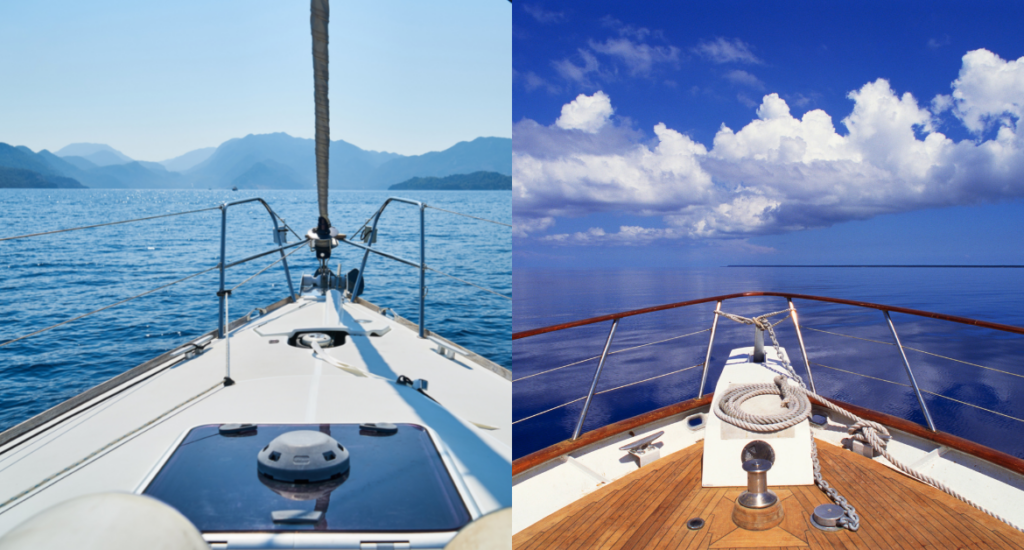
Power boats and sailboats are the two styles of boat you’re most likely going to be choosing between when you’re in the market for a vessel to spend your free time on. This can be tough since there really is no correct answer to the sailboat vs. powerboat debate but knowing the differences in benefits between the two is a must before making a final decision. Mabru Power Systems , a leader in the world of marine air conditioning , is familiar with all things nautical and is always ready to give helpful information when needed.
Benefits of Having a Sailboat on the water
Power boats and sailboats may not have the same mode of energy and fuel, but what the former lacks in silence and activity, it makes up for in relaxation and speed. Power boats are much faster than typical sailboats, thanks to their engines, and often have larger cabins that are available due to the amount of space saved from not having a mast. No matter which of the two vessels you opt to call your own, being comfortable while enjoying everything the water has to offer is a must. The best way to ensure that you’re never short of amazing spirits is to have the right marine air conditioner!
What is a Power Boat Good For?
Southern California is also full of lakes where visitors can enjoy boating and other kinds of recreational activities and water sports. One of the most popular options that people could go to is Castaic Lake. Boasting one of the most beautiful locations in the State of California, visitors could go on float tubes, kayaks, and fishing boats. This park even gives the option for people to set up a tent or RV so that they could better experience what the park has to offer.
Mabru Marine AC Will Maker Any Vessel a Comfortable One
The expertly crafted air conditioning units created by the Mabru Marine AC team are unbeatable! Find a vendor in your area and get yours today or reach out to our team for further information about the products we offer. Interested in more insights from our team of experts? Feel free to read some of the team’s other articles to learn more.
Related Readings
- Analysis of The Perfect Boat Temperature
- How to Boat in Cold Weather
ARTICLE CREDIT: MABRUPOWER SYSTEMS AVAILABLE THROUGHOUT ASIA FROM DRAKE MARI

Cancel Reply
Your email address will not be published. Required fields are marked *
Related Article
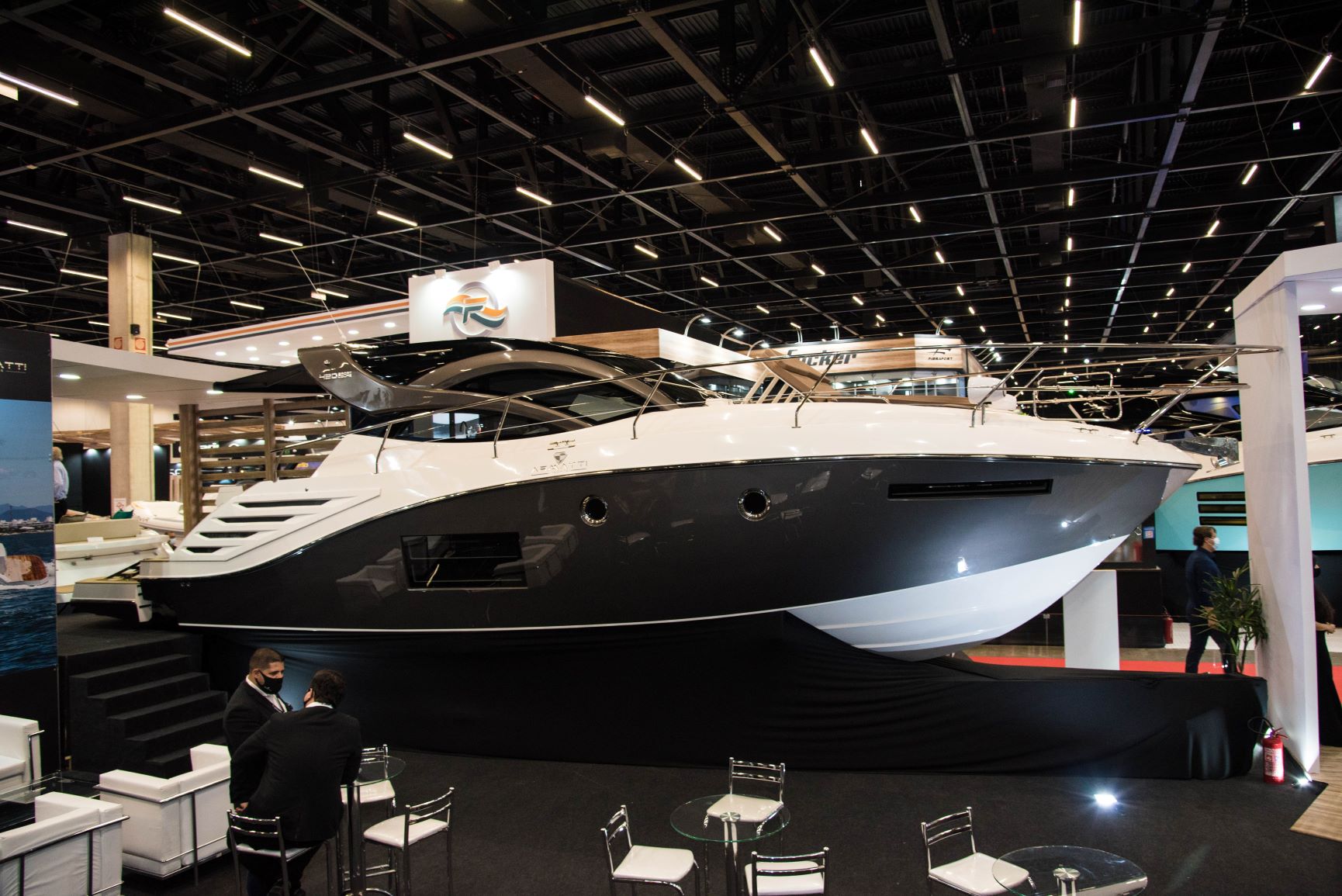
ARTICLE CREDIT: MARINE DEPARTMENTAVAILABLE THROUGHOUT ASIA FROM DRAKE MARINE DRAKE...
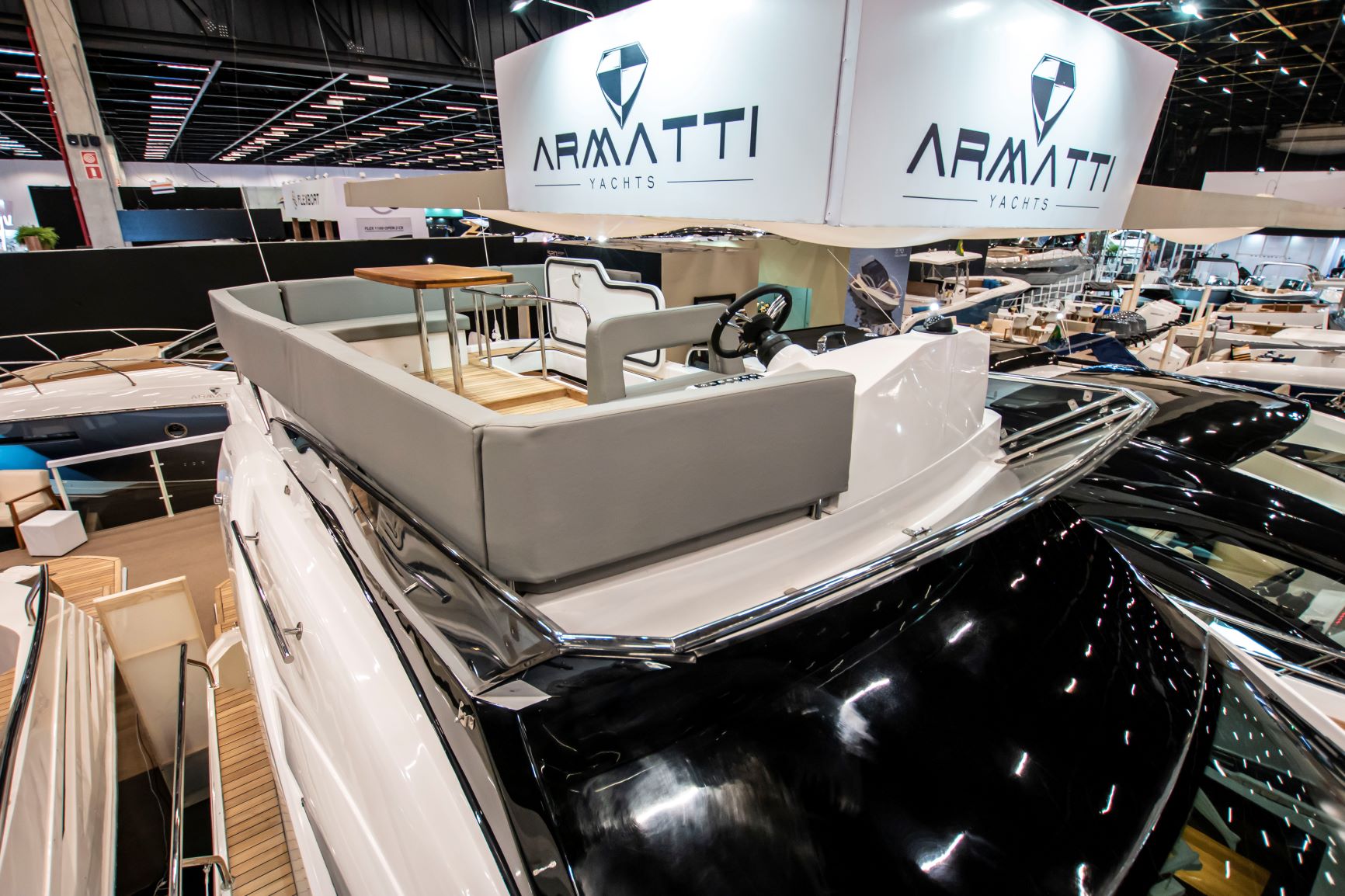
The Discover Boating Miami International Boat Show is owned by...

Navigation during the months of lower temperatures, such as autumn...
13 Reasons Why Sailing is Better Than Powerboating
Want to know why sailing trumps powerboating? In this article I'll give you 13 clear-cut reasons why it's the case - and why I'll never go back.
Why is sailing better than powerboating? A sailboat is quiet and clean, whereas a powerboat is not. Sailboats are much cheaper to buy and to run. They're also safer and more reliable. Sailboats are more challenging and exciting than powerboats. Sailing is about the journey, not the destination. Powerboats are better at getting someplace, but it will cost you.
Sailboats are clearly the better choice ... but not for everyone. Of course, it depends. So, to be fair, I'll talk about some of the advantages of powerboats as well - after I've made my case for sailing,
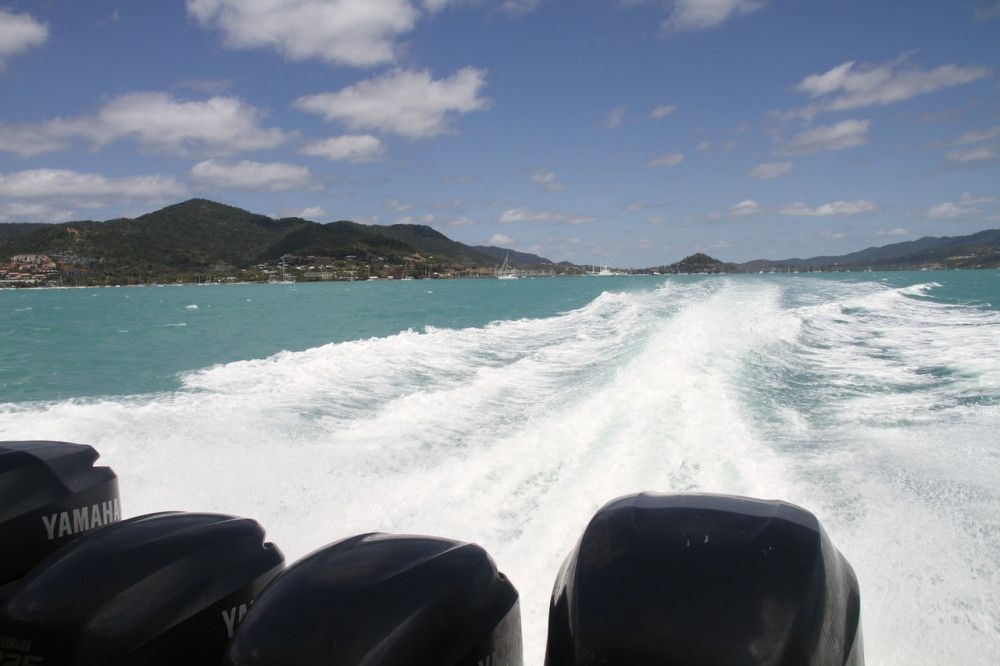
On this page:
2. sailboats are clean, 3. sailing is cheaper, 4. a sailboat is cheaper to buy, 5. sailboats have right of way, 6. a sailboat is safer, 7. sailboats are more reliable, 8. sailing is more exciting than powerboating, 9. sailors work with nature, 10. sailing helps to improve yourself, 11. you get to go more places, 12. you can live on a sailboat, 13. you can cross an ocean in almost any sailboat, disadvantages of sailboats over powerboats, when is it better to choose a powerboat, related questions.
Quiet - I use only this one word on purpose. It's the one major reason why sailboats are better than powerboats, period.
If you're out on the water under sail, you only hear the water splashing on the hull, and you hear the wind, and it's just extremely peaceful.
Now imagine the same cloudless day, and you're in your motorboat. You're relaxing, looking across the water, the birds are shrieking ...
... JJNNNGGGG!
There's this constant screeching sound in the back, as a soundtrack to your beautiful day out.
Some people aren't that bothered, and I really respect that.
But let me point out that your boat's engine can easily reach volumes of 80 dB. That's about your alarm clock going off next to your head - only now the sound goes on and on, and there's no snooze button whatsoever.
When powerboaters say a powerboat gets you somewhere quickly, I suspect that is because getting their very quickly is the only way to get rid of the noise.
Besides being very quiet, sailing is also very environmentally friendly. I'm not at all against using gas, but we have to admit it: using wind instead of gas is just a great way to help the environment. And if that's not something you're concerned about, just think of the smell.
Using wind power is clean. It doesn't smell of anything. Some people like the smell of gas (and so do I). But I like the smell of the salty ocean even more, or the blossoming forest surrounding the lake.
Of course you will use your engine every now and then, and that's fine. But being able to travel without the smell and noise is great. Not only because it removes a nuisance - it actually allows better smells and sounds to reach you.
So, besides being less noisy and smelly, a sailboat is also way less costly than a powerboat.
Running a powerboat is notoriously costly, and for a good reason. You use A LOT of gas. Actually, if you have a really fast powerboat, it's about 25 gallons of fuel per hour. That's roughly $300 (per hour). Yikes.
To be fair, smaller powerboats use a lot less. Cruising at lower speeds in inland water also reduces fuel consumption.
Actually, most powerboats use 1 gallon per hour on average. So an inland weekend trip will cost you anywhere between $30-$80, which perhaps isn't too bad - but that's for the fuel alone.
It becomes really painful if you plan on sailing long distances. It's true: you get there much faster than on a sailboat. But, for example, crossing from San Diego to Hawaii also costs you about $2,000 more.
By the way, if you want to know how to do it, check out my post on the route here .
Example: crossing San Diego to Hawaii is about 2,600 NM. Let's say you cruise at 25 knots (29 mph or 46 km/h). It will take you roughly 100 hours to get there. Fuel consumption would be around 5 gallons an hour. That's 500 gallons total ... or $2,200!
Not using an engine doesn't only reduce engine cost but also engine wear. On a sailboat, your engine runs a lot less miles, so you will have to replace moving parts (like the belt) a lot less often.
Powerboat engines are more expensive in general. Bigger, more powerful, and also more expensive to maintain.
Sailboats are also a lot cheaper to buy. Powerboats are about twice as expensive.
Let's say you don't own a boat and need to get the boat before you leave. Your trip to Hawaii already is about $2,000 cheaper on a sailboat. I've checked Craigslist and come up with two boats in San Diego:
- You can get a nice 22' sailboat for about $1,500 (and a bit of luck).
- A 22' powerboat will cost you at least double, more likely $5,000-$8,000.
The trip is now $5,500 more expensive on a powerboat vs. the sailboat.
That's a lot of nice meals in nice restaurants once you get there:
- take-out for each day of the entire year
- a nice dinner each week, 52 times
- or one really fancy dinner each month for the entire year
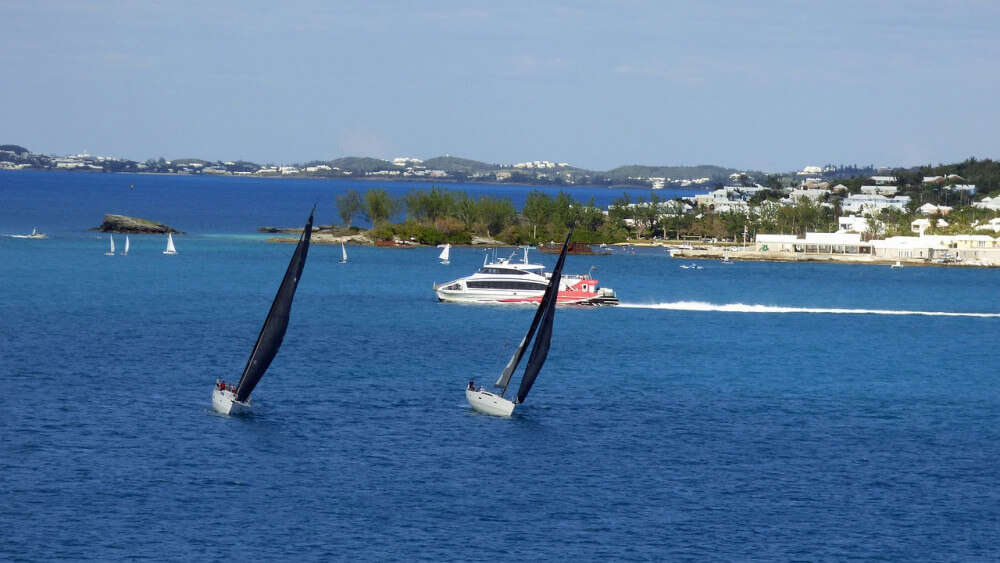
Sailboats come first. If you're sailing and not motoring, you generally have right of way over motorboats.
If a motor vessel is large and has a hard time maneuvering, it may get right of way over the sailboat.
The exceptions are:
- Very large motor vessels in large channels
- Large motor vessels (over 65 feet) in narrow channels
- Motor vessels that are in trouble
- If a sailboat is overtaking the motor vessel, the latter has right of way
Please note: if you're on a sailboat and use the engine, you're considered a motorboat.
This seems like a bold statement, but sailboats actually are much safer than powerboats. Sailboats are more stable than powerboats, precisely thanks to the characteristics that we need for sailing.
- They are generally heavier and have a deeper draft.
- Most sailboats also have a centerboard or keel, making it nearly impossible for them to capsize.
- The hull materials used for sailboats is heavier.
All these factors help the sailboat to be more stable on water.
The powerboat has an achilles heel. The reason it's so fast is also the reason it's less safe.
First of all, a powerboat can go a lot faster, making it unsafer in general.
To go faster, the powerboat's hull has a lot less draft than the sailboat. It's lightweight, allowing it to plane. Planing a boat means the bow comes out of the water, which reduces the water resistance. This is great in smooth weather, but it can be dangerous with heavy winds. If the wind catches the hull, the powerboat may flip over (powerboats are known to do this).
Besides being safer, sailboats are also more reliable.
If you run out of fuel on a powerboat, that's that. You'll have to wait to be saved.
A sailboat typically only carries fuel for when the sailor gets bored. It's to speed up light air sailing, because sailing in light wind can be quite intensive, and doesn't go very fast. However, if you run out of fuel, nothing happens. (Even if, at the same time, the wind disappears completely, it's just a matter of time until you can get back at it and save yourself).
True: you can get dismasted on a sailboat. But that's an incident. Running out of fuel on a powerboat is a certainty, because that's what it's made for: burning fuel, and lot's of it.
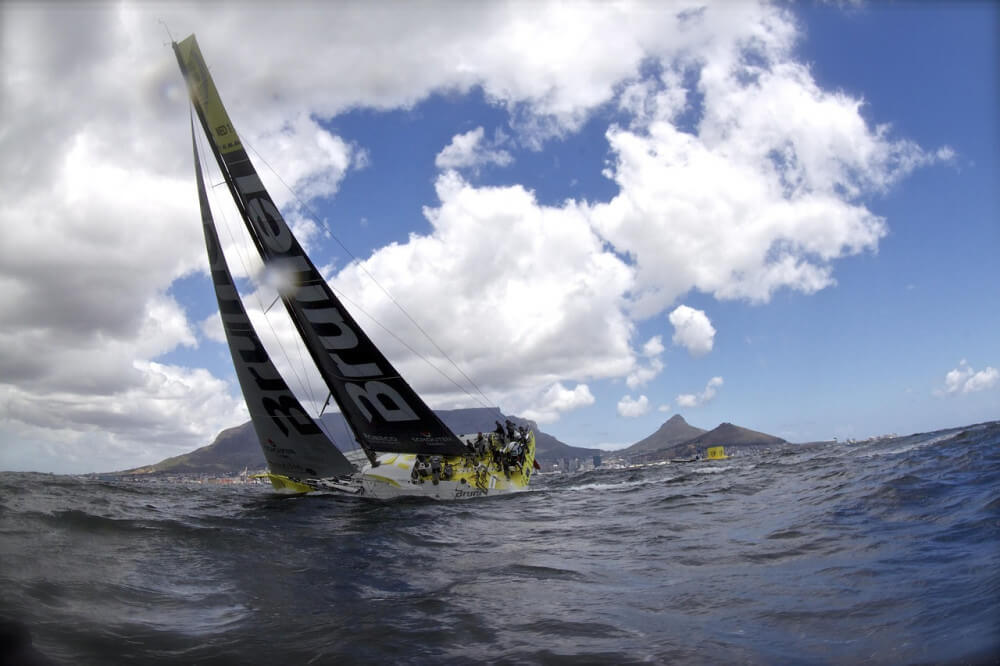
In general, sailboats are more about the journey, and powerboats are more about the destination.
If you need to go somewhere quickly, the powerboat is the quicker, more comfortable way to do it. If you want to go for lunch on an island, having an engine do the work allows you to drink a beer while you wait to arrive. In this regards it's no different from a train.
Yes, a powerboat is comfortable ... because it's boring.
But sailing is so much more. If you get out on the water for the sake of being there, sailing is for you.
It's exciting to plot a course and then try to figure out how to use the wind to get there. It requires some physical strength to operate the mainsail, which is why it's more rewarding.
But most of all: it's just a thrill to harness the force of nature with your own hands.
If you make a mistake by plotting a less-than-ideal sailing course, you could find yourself tacking upwind for the rest of the afternoon. A powerboater would just spin the wheel and go that way instead. It's true, the engine is perhaps the superior technology here.
But have you ever wondered why a powerboat uses so much fuel? It's on water after all. Well, they work against nature. They have to plow through each wave, pushing itself forward.
It's a sort of Monday-morning-boat - it doesn't really want to go.
So you first have to fill it up with plenty of liquids.
A sailboat uses drag and lift to propel itself forward. It's almost symbolic - like it wants to go forward . All you do is finding the right point of sail, and let it.
This may sound a bit corny, but I believe sailing is a form of self-improvement.
Every time you find yourself in heavy weather and deal with it, you improve your self-confidence. Every time you successfully plot a course, or cross an ocean, or even find the right point of sail, you improve.
You improve by overcoming these challenges. Sailing is a form of art: learning to read the wind, the waves, to feel your boat.
Every time you fail, you learn as well - sometimes about sailing, but also about yourself. It helps you to get to know yourself.
Getting good at sailing is a very rewarding process, but it can take time, and be frustrating at times.
But the reward is huge. If you know how to sail, you know how to navigate, how to harness the power of wind, and how to master the seas.
By sailing you become a seaman; by powerboating you become, well, a powerboater.
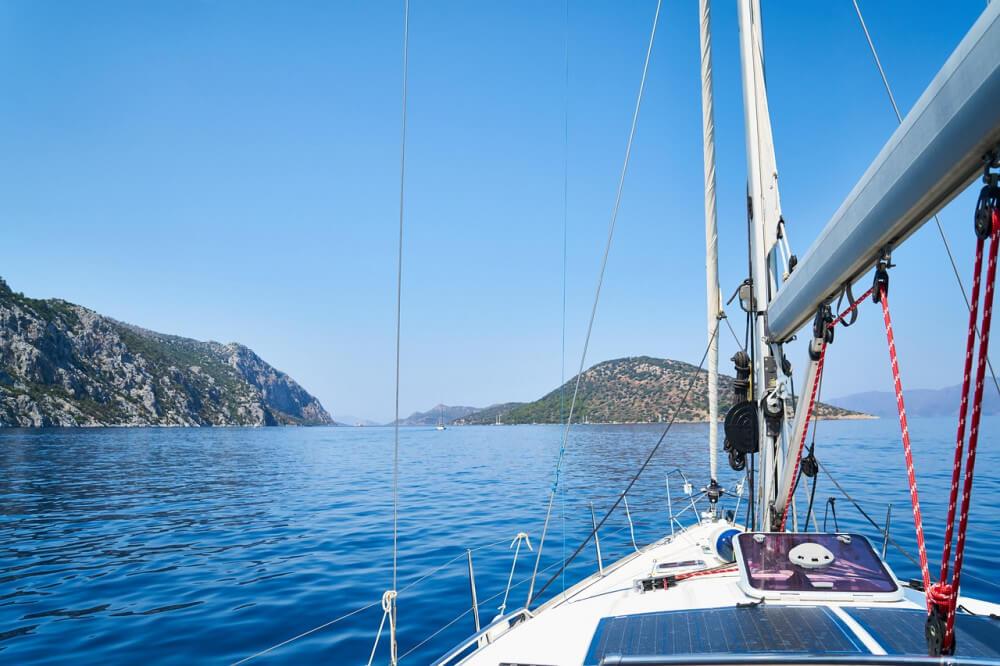
Sailboats can go pretty much anywhere. Okay, to be fair, they have a deeper draft, so some places are off-limits. (However, if you have a boat with a centerboard, you can fix this pretty easily.)
But, overall, sailboats get to go more places.
- you can sail in waters where motoring isn't allowed
- you can sail in rougher waters like the ocean or lakes
- you can sail in more weather conditions
Some waters are protected, due to birds breeding there, or some other preservation rule. Sailboats can just go there, because they don't disturb the wildlife in any way.
If you own a powerboat, you're probably not thrilled with 12-knot winds. Also, wind gusts can be a big problem. If the weather is unsettled, you probably don't bother going out.
If you own a sailboat on the other hand, you're probably excited. Sailboats are made to handle rough waters. You'd be surprised how well small sailboats are able to handle extreme conditions. This is thanks to the same factors I've mentioned reason 6 - safety.
You can also go for longer trips without worrying about the next gas station. You can actually just leave indefintely and be fine on a sailboat.
Alright, I'm going out on a limb here. Of course, you can live on a powerboat as well, if it has a cabin. Most don't. Pretty much all sailboats over 24' have a cabin. It's small, but you can definitely live there.
The most important argument is the cost. Pretty much all powerboats with living accommodation are just incredibly expensive.
You can actually live pretty decently on the $1,500 sailboat from Craigslist I've used for sailing to Hawaii.
Want to live on a powerboat? Think more in the $50,000-ballpark.
Powerboats are not made for open sea. Sailboats generally are. I know, I go on and on about it.
"Ok, I get it. They're more stable, have a stronger hull, better hull shape."
Surely any sailboat under 30' (9 m) isn't made for the ocean, right?
Well, I'm afraid it's far worse.
The smallest sailboat ever to sail around the world was 21 feet (6.4 m) .
Try and cross an ocean in a 21' powerboat (- and then tell me how much it cost you to fuel it without crying).
Point in case is that even a small sailboat can get you almost anywhere, but a powerboat can't do it. It's not made to do so. It's made to fly over the water for a short distance, look cool, then return home.
Powerboats can be great fun. Expensive, yes, but so is every hobby.
Powerboats aren't all bad. I actually quite like them. Two friends of mine co-own a Mastercraft 220 (Ford V8). They let me take her out for a spin once. Oh boy was it fun.
And powerboats do have some real advantages over sailboats. They are a bit more flexible inland. They are very comfortable. And then there's these things:
Places you can't go
As I've mentioned, powerboats have a lot less draft than sailboats. This means you can use them in very shallow waters, like the canals of Giethoorn (which is near my hometown). Even a sailboat with centerboard has a hard time here.

Oh, and have I mentioned bridges before? Can't go there in a sailboat.
Cost of sails and rigging
Another disadvantage of sailboats is the cost of equipment. Equipment like rigging, sails, can be very expensive. Sails have to be replaced every 3,500-4,000 hours. The rigging needs replacing every 10 years or so.
The sail will cost you anywhere from $1,000 - $3,000 for a mid-sized sailboat.
The rigging will cost you anywhere between $800 - $2,600.
So that's roughly $5,000 every 5-10 years. Which is expensive, but hey, you get to sail to Hawaii for free.
My guess is your fuel cost (or lack thereof) will pay for this easily.
If you wan't to go in-depth on the cost of sail replacement, I've just written an article with formulas and tables. Check it out here.
Other disadvantages of sailing
- You can't wakeboard behind a sailboat (or maybe you can, but we've never tried).
- In general, towing is probably a better idea using a powerboat.
- Also, sailboats generally offer less space than a powerboat.
- You are always busy
I would prefer a powerboat over a sailboat if I have to get somewhere. For example:
- for fishing trips
- for family day-trips to a beach or island
- if I'm a Coast Guard
- if I want to water ski or wake board
Which is safer: a sailboat or motorboat? A sailboat is safer than a motorboat. Most sailboats have a deeper draft and a keel to improve their handling in rough water. This makes them more stable. Powerboats are light weight to increase speed, making them more prone to wind. Sailboats are generally slower than motorboats, which makes them safer overall.
Are sailboats cheaper than powerboats? A sailboat is cheaper to purchase and to run than a powerboat. A second-hand sailboat is about half the price of a powerboat. The engines on powerboats are a lot more expensive than those on sailboats, which adds to the maintenance cost. Fuel consumption of a powerboat can range between 5-30 gallons ($20-120) per hour.
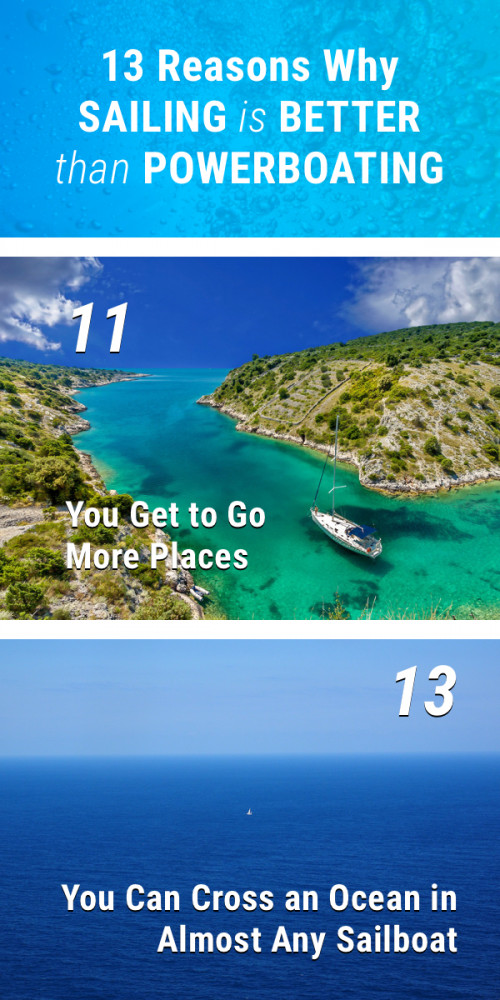

Leave a comment
Own your first boat within a year on any budget.
A sailboat doesn't have to be expensive if you know what you're doing. If you want to learn how to make your sailing dream reality within a year, leave your email and I'll send you free updates . I don't like spam - I will only send helpful content.
Ready to Own Your First Boat?
Just tell us the best email address to send your tips to:
Better Sailing

Sailboat Maintenance Checklist
Whether your sailboat is stationary for a long time, or whether you live and travel with it, there are several key things to keep an eye on. Regular maintenance of your sailboat will ensure more years of use and better performance. Furthermore, your sailboat will be safer and it will keep its value longer. Below you’ll find a checklist for routine mission-critical checks. Some of these checks have to be performed both daily and monthly. Others require monthly and annual checks, but always make sure to inspect everything, thoroughly. Follow the steps of the list and ensure trouble-free sailing.
The engine of your sailboat is something that requires a lot of care and attention. Inspect regularly the condition of the engine and look for corrosion, as well as make sure that the outboard motor is securely in place. Daily maintenance of the engine consists of:
- Check the engine’s oil level.
- Check the belt tension.
- Transmission fluid level.
- Inspect pulleys as well as the alignment.
- Alternator and water pump belts have to be tight.
And now we’re moving on to the monthly maintenance of the engine which includes:
- Change the oil and filter of the engine.
- Clean the thru-hull.
- Clean the siphon break.
- Fill up coolant and antifreeze if needed.
- Check pump, impeller, and raw water strainer.
Finally, let’s see the annual maintenance of your sailboat’s engine:
- Test the batteries.
- Check the diesel tank for damages.
- Inspect the shaft and propeller.
- Change primary and secondary fuel filters.
- Bleed the fuel system.
Check the Bilge and Bilge Pump
The bilge is situated at the bottom part of the sailboat and collects excess water. The bilge pump is the piece that removes water from the bilge. If the bilge pump is damaged, your sailboat can even be sunk! In order to keep yourself and your boat safe, check the pump hoses for debris that could cause clogs. In case you find a leak, the first thing you should do is to taste the water. Is it freshwater or saltwater? So, every few days survey the bilge for oil, water, or fuel leaks. Moreover, it’s important to lift a central floorboard often just to ensure that the bilge is dry. Leaks can be caused by different areas. For instance, leaks that come from holes in the deck, loose hatch seals, or improperly sealed windows.
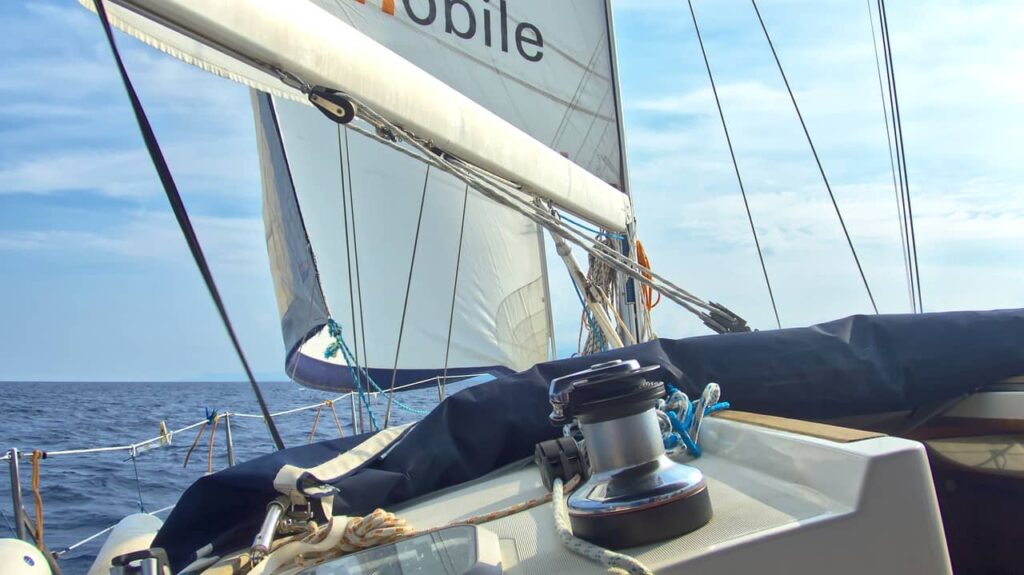
>>Also Read: Common Sailboat Problems and How to Fix Them
Always inspect probable damages to your sailboat, even if it’s in a well-maintained condition. It’s recommended to make monthly and yearly checks to make sure it stays in perfect condition. Firstly, inspect the hull, keel, and rudder and look for any damages, cracks, and blisters. Then, make sure that the drain plugs are in place. Apply gel coat restorer or a rust inhibitor to the scratches or to the rusting of your sailboat’s bodywork. Moreover, you will also need to remove your sailboat from the water, once a year. It’s easier to do this during the winter months and although this can be a costly thing to do, is really worth it. Like this, you’ll get a better image of the hull’s condition and fix anything that needs repair. Finally, remember to annually carry out anti-fouling and any re-painting or zinc replacement.
Raw Water Strainers and Freshwater Levels
Don’t forget to check your seas strainers! If you’re running your generator, heat/air conditioning, or anything that requires saltwater or raw cooling system to function, you might want to surveil your strainers. Furthermore, inspect the water flow on all of the raw water cooling systems. You have to see an easy flow of heating, Genset, refrigeration, and aircon cooling water out of the system. If the freshwater system, which is pressurized by an accumulator tank gets too low, then it throws the whole system out and thus it will not be working properly. So, it’s imperative that you never let your water tanks empty.
As for the electrical system it is recommended to check it every month. Check the condition of the wires, if they’re neatly secured, dry, and inspect their casings to see if they are intact. However, there are some sailboats that have their generator running periodically to charge them up. So, keep an eye on your battery’s charge levels. Also, the electrical lines must be in good condition to keep the electrical system on your sailboat up and running. Any damaged lines could provoke a fire hazard. To prevent electrical lines from erosion, remember to keep them clean, and use a digital multimeter to make sure everything’s working properly.
Without the battery, which is the heart of your sailboat, the engine won’t start, nor the electrical components will work. So, take good care of the battery and check it once a year, or more often, i.e. during the boating season. Keep in mind that batteries naturally degrade over time, so this is a must task to perform. You can check the battery’s charge with a digital multimeter, and the connections for corrosion. Moreover, test the batteries and check if they’re clean and dry. There are sailboats that have solar and wind power that continuously tops up the batteries. Other sailboats depend on having the generator running periodically in order to charge them up.
In case you’re running the generator you will need to check its vitals at least once a week. So, check the oil, belt, water level, and inspect for leaks and loose connections. You can see the leaks easier if you keep the Genset clean.
Oil and Filter
Remember to regularly change the oil and oil filter. In case you don’t, then it is possible to provoke damage to the engine parts. In order to change the oil, let the engine run for about seven minutes, then turn it off. Subsequently, place a container under the drain plug. Take out the drain plug and loosen the screw that is located above. Then, let the oil drain out for about 30 minutes. During this process change also the oil filter. After the oil drains out, replace the drain plug and tighten the screw. Finally, fill the engine with the proper oil.
Fridge and Freezer Temperature
The effectiveness of a fridge often depends on the temperature of the sea. Many boat refrigeration systems get a charge over time which makes them less effective. Therefore they slowly reduce the temperature gauge. So, it is recommended to change the temperature gauge at least once a week. The temperature of the fridge has to be below 5 degrees and the freezer below freezing.
Sails and Rigging
Sails and rigging have to be checked at least once a month. Firstly, look out for any chaffing where the headsail sheets attach to the clew, and also to the traveller and boom vang. Secondly, examine thoroughly if there’s any wear on the mainsail. Then, check if the cotter pins and shroud are in place and in good condition. Finally, make sure that the turnbuckles and pelican hooks on the lifeline are in good condition.
Summary- Maintenance List
Your sailboat’s maintenance needs to be taken seriously. When you’re regularly maintaining your sailboat, you also ensure its life spanning. Some basic items that require constant maintenance are the generator, the battery, the plumbing, the bilge, oil, and the fridge and fluid levels, among others. However, there are others that require monthly or yearly maintenance, such as the engine, the electrical system, the sails and rigging, the propeller, zippers, hinges, upholstery, etc. In case you can’t repair or check the condition of these parts, then consider contacting a professional to help you with the maintenance process.
Peter is the editor of Better Sailing. He has sailed for countless hours and has maintained his own boats and sailboats for years. After years of trial and error, he decided to start this website to share the knowledge.
Related Posts

Atlantic vs Pacific: Which is More Dangerous for Sailing?

Why Do Sailboats Lean?

How Does a Boat Sail Upwind? Unveiling the Mechanics of Against the Wind Sailing

How Does Sailing Work? The Physics of Sailing
- Buyer's Guide
- Destinations
- Maintenance
- Sailing Info
Hit enter to search or ESC to close.

WaterCraft 101
Your guide to fun on the water!
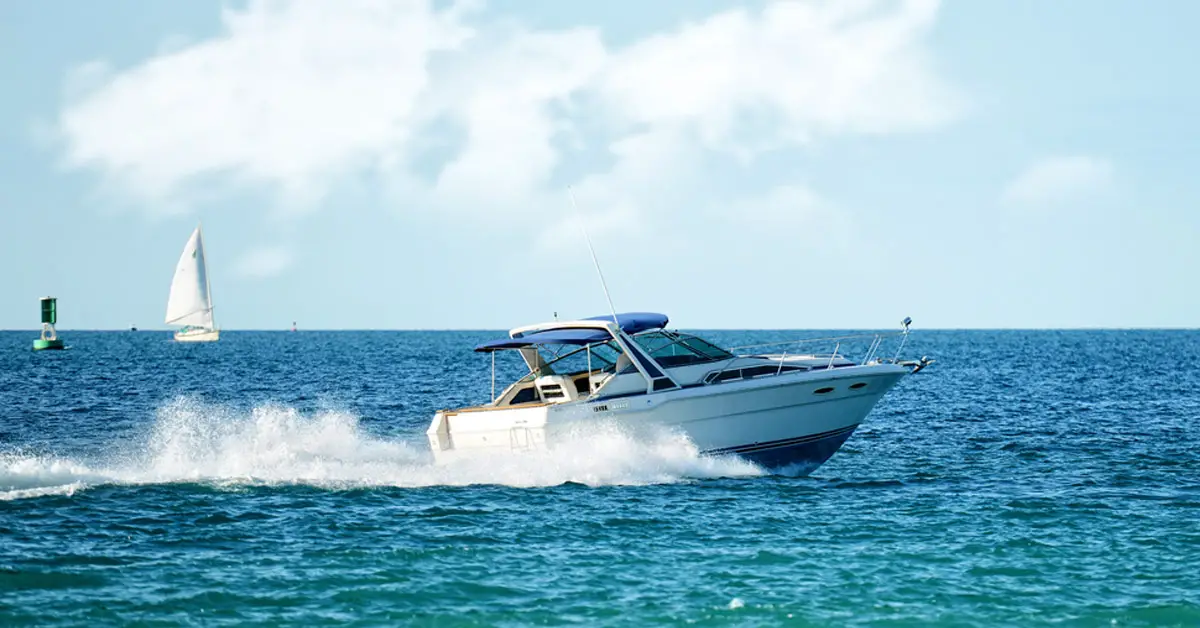
Sailboat vs. Powerboat: Which Is the Give-Way Vessel? Understanding Navigation Rules on the Water
Navigating the waters is an exciting adventure, whether you’re at the helm of a sleek sailboat or commanding a powerful motorboat. However, along with this thrilling journey comes the responsibility of understanding and adhering to the marine navigation rules, specifically those concerning the right of way or the “give-way” vessel. This aspect is vital to maritime safety, ensuring orderly movement and preventing potential collisions on the high seas.
Under the International Regulations for Preventing Collisions at Sea (COLREGs), a powerboat is typically the give-way vessel when encountering a sailboat under sail. The powerboat should alter its course to avoid a collision. Always confirm specific situations with local and international rules.
This article will delve into the intriguing debate between sailboats and powerboats. We’ll dissect the intricate navigation rules on the water, shedding light on the factors determining which boat must yield.
This piece promises to be an enlightening read for seasoned mariners and beginners alike, providing essential information for anyone who wishes to tackle the waves responsibly. Remember, knowing these rules isn’t just a matter of etiquette—it’s a crucial component of maritime safety.
Table of Contents
Introduction to Nautical Navigation Rules
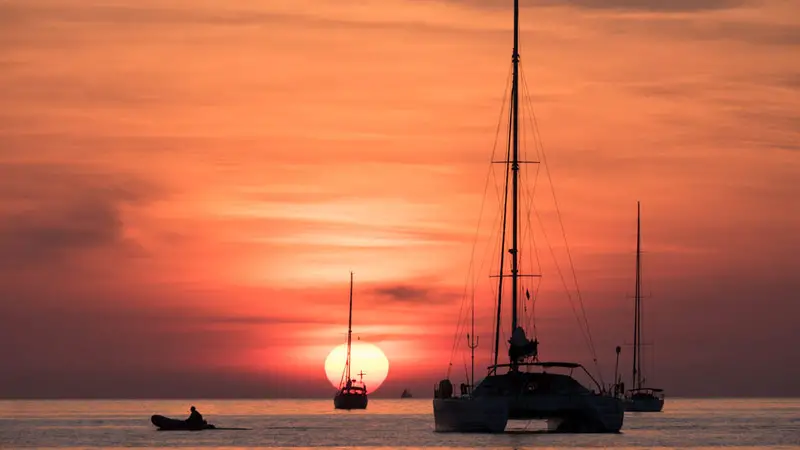
Navigating the vast expanse of our world’s waters requires skill and a profound understanding of maritime movement rules. These rules, known as the International Regulations for Preventing Collisions at Sea (COLREGs), have been established by the International Maritime Organization (IMO) and are adhered to by seafarers worldwide. They provide a comprehensive framework for nautical navigation, ensuring that all vessels move in a safe and orderly manner.
Key points in understanding nautical navigation rules include:
- Understanding COLREGs: COLREGs are the universal road rules for boats and ships worldwide to prevent collisions between two or more vessels.
- Right of Way or Give-Way Rules: These rules determine which vessel is responsible for keeping out of the way in encounters with other vessels to avoid collisions.
- Sound and Light Signals: COLREGs establish a system of sound and light signals so vessels can communicate their intentions in various scenarios, especially in poor visibility.
- Navigation Lights and Shapes: Vessels must display specific lights and shapes in different situations to indicate their status to other vessels.
- Steering and Sailing Rules: These rules determine vessels’ actions in the sight of one another to prevent collisions.
- Special Circumstances: There are also rules for special circumstances, such as vessels not under command, constrained by draft, engaged in fishing , or sailing in narrow channels.
Understanding the Concept of the Give-Way Vessel
Understanding the concept of the give-way vessel is fundamental to maritime navigation. In nautical terms, a ‘give-way’ vessel refers to the boat required to alter its course or speed to avoid colliding with another boat, the ‘stand-on’ vessel. Essentially, the give-way vessel must yield to the stand-on vessel.
These designations help create an orderly flow of traffic on the water and significantly reduce the risk of collisions. It’s important to note that these roles can change based on various factors, including the type of vessels involved, their relative positions, and the environmental conditions.
The responsibility of the give-way vessel does not absolve the stand-on vessel of all duties. If it becomes apparent that the give-way vessel is not taking appropriate action to avoid a collision, the stand-on vessel must take evasive action.
Regardless of their designation, both vessels share a mutual obligation to avoid incidents at sea. Understanding these dynamics and responsibilities is crucial for all mariners, as it contributes to safer navigation and fosters a culture of mutual respect and cooperation on the waterways.
Sailboats vs. Powerboats: A Basic Overview
Sailboats and powerboats represent two distinct modes of marine transportation, each with unique characteristics, advantages, and challenges. Sailboats, propelled primarily by wind action on their sails, offer an eco-friendly, serene, and often sportive seafaring way. On the other hand, powerboats, driven by mechanical engines, provide speed, power, and often more control, particularly in challenging weather conditions. Each type requires different skill sets and knowledge to operate safely and efficiently.
Key characteristics of sailboats and powerboats include:
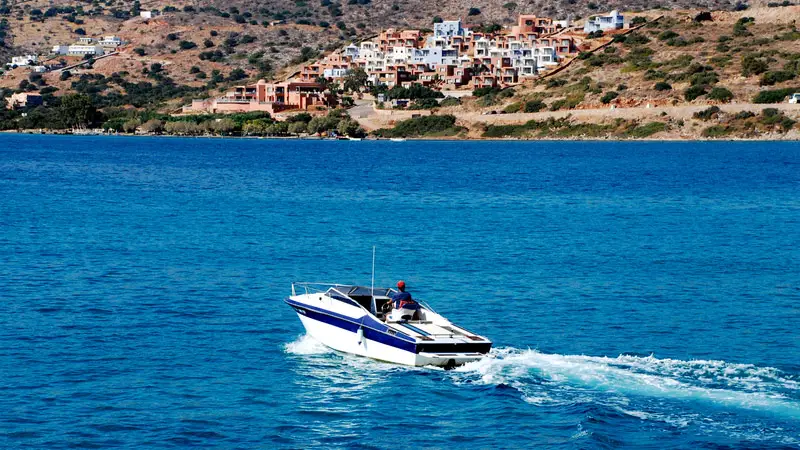
- Propulsion: Sailboats rely on the wind acting on sails, rigging, and hull for propulsion. In contrast, powerboats use engines (inboard, outboard, or stern-drive) for movement.
- Speed: Powerboats generally offer higher speeds than sailboats, making them suitable for water skiing, racing, or quick transportation. Sailboats, being wind-dependent, can’t match the speed of a motorboat but offer a more leisurely pace.
- Maneuverability: Powerboats usually have superior maneuverability due to their engines. Sailboats, reliant on wind and currents, require more skill and understanding of these elements for effective control.
- Fuel efficiency and environmental impact: Sailboats are more environmentally friendly and fuel-efficient as they use wind power. Powerboats rely on fuel, which leads to emissions and potential environmental impact.
- Skills and knowledge required: Operating a sailboat requires knowledge of sailing techniques and wind patterns. Powerboat operation is typically more straightforward but requires an understanding of engine operation and maintenance.
The Role of a Powerboat in Marine Traffic
Powerboats play a significant role in the vast and diverse arena of marine traffic due to their speed, maneuverability, and versatility. These vessels can range from small personal watercraft and motorboats to larger yachts and ships, all powered by engines.
Their mechanical propulsion allows them to move independently of wind and current conditions, giving them an advantage in certain navigational situations. They can quickly respond to changes in direction, making them particularly valuable in congested waters or emergencies.
However, this power and speed come with responsibilities. Powerboats are generally considered the give-way vessel when encountering sailboats under sail, mainly because they have more control over their course and speed. They are expected to be vigilant and proactive in avoiding collisions, altering course or speed as needed.
Also, due to their potential to create a significant wake, powerboat operators must also be mindful of their vessel’s impact on other boats, wildlife, and shoreline erosion. Thus, the role of a powerboat in marine traffic extends beyond its capabilities—it includes the duty to navigate responsibly for the safety of all water users.
The Role of a Sailboat in Marine Traffic
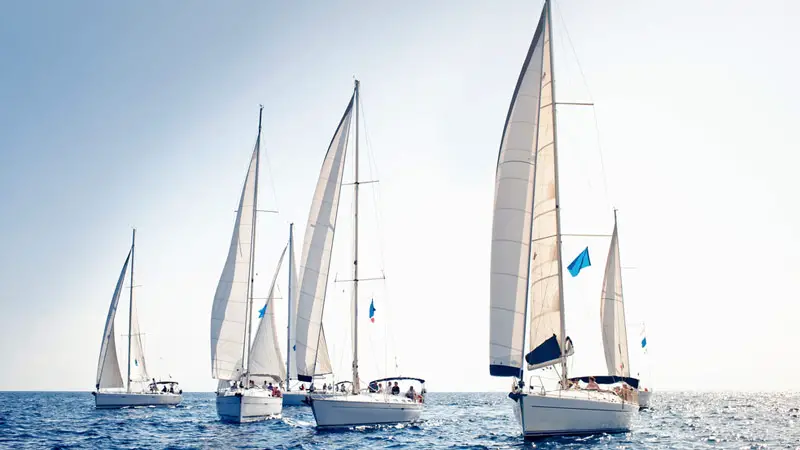
Sailboats hold a unique and enduring presence in marine traffic. They are characterized by their dependence on the wind for propulsion, using sails to catch and harness its power. These vessels, varying from small dinghies to large sailing yachts, offer a sense of tradition, adventure, and connection with nature that is often unmatched.
Sailboats can navigate in areas with depth restrictions where larger powerboats cannot go, and their silence and absence of emissions make them an eco-friendly choice for seafaring.
Despite their slower speeds and lesser maneuverability than powerboats, sailboats generally have the right of way under the COLREGs when they are under sail and in a crossing situation with power-driven vessels. This rule recognizes the limitations of a sailboat’s maneuverability due to its dependence on wind direction and strength.
However, this privilege does not free them from the responsibility of maintaining a proper lookout and taking corrective action when it’s clear that the give-way vessel isn’t taking appropriate action or when both vessels are in such proximity that immediate action is necessary. Therefore, the role of a sailboat in marine traffic is not just about leveraging wind power but also about understanding and adhering to the navigation rules for everyone’s safety.
The Powerboat-Sailboat Encounter: Identifying the Give-Way Vessel
Navigating encounters between powerboats and sailboats is a fundamental aspect of marine safety. In general, according to the International Regulations for Preventing Collisions at Sea (COLREGs), the powerboat is usually the give-way vessel when encountering a sailboat that is under sail. This is because a powerboat with an engine is typically more maneuverable than a sailboat that relies on the wind for propulsion.
The give-way vessel, in this case, the powerboat, has the responsibility to take early and substantial action to avoid colliding with the stand-on vessel, which in this case would be the sailboat. This may involve altering the course, reducing speed, or combining both. These rules aim to create a predictable path for both vessels to prevent a collision.
However, it’s essential to understand that these rules can have exceptions based on specific scenarios. For instance, when a sailboat overtakes a powerboat, it becomes the give-way vessel, regardless of its propulsion method. Furthermore, if the sailboat is operating its engine and not clearly showing sails, it is considered a powerboat under the COLREGs.
Both powerboat and sailboat operators must know these rules to ensure safe navigation. Importantly, the ultimate rule is to avoid collision – even if this means the stand-on vessel has to give way. Knowledge, caution, and mutual respect are key to maintaining safety on the water.
Factors Influencing the Give-Way Decision For Boats
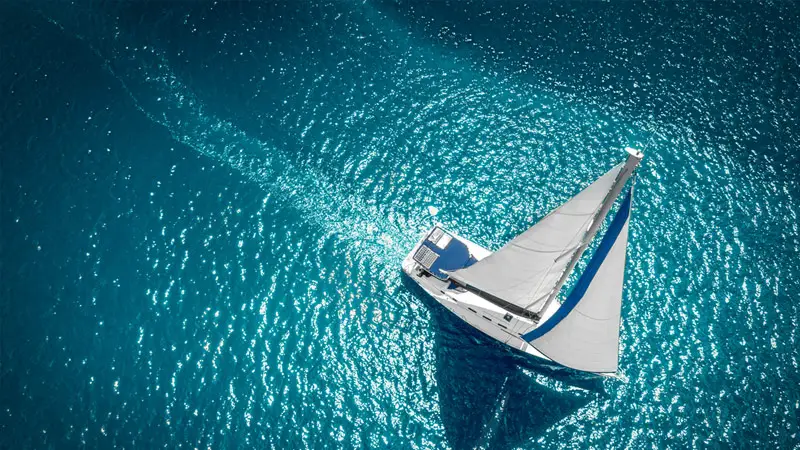
Several factors influence the decision of which vessel is the give-way vessel. These include the type of vessels involved, their relative positions, and the specific scenario they are in. While the general rule is that powerboats give way to sailboats under sail, there are exceptions and other factors that can change this rule. Understanding these factors is critical for safe navigation and collision avoidance.
Key factors influencing the give-way decision include:
- Type of Vessels Involved: The type of vessels involved in an encounter greatly influences the give-way decision. For example, vessels not under command, vessels limited in their ability to maneuver, boats constrained by their draft, fishing vessels, and sailboats generally have right of way over power-driven vessels.
- Relative Positions: The relative positions of the vessels also influence the giveaway decision. For example, a vessel overtaking another is generally the give-way vessel, regardless of the type of vessel involved.
- Operating Conditions of Vessels: Whether a vessel is under power or sail can influence the give-way decision. A sailboat under power is considered a power-driven vessel subject to the same rules as other vessels.
- Navigational Hazards: Navigational hazards may also impact the giveaway decision. A vessel in a position where it can safely navigate may be required to give way to a vessel closer to navigational hazards.
- Traffic Density: In areas of high traffic density, vessels may be required to maintain a higher level of vigilance and may need to take action to avoid collisions earlier than in areas of low traffic density.
Remember, while the give-way rules provide a framework for determining who has the right of way in a given situation, the ultimate responsibility of all mariners is to take whatever action is necessary to avoid a collision.
Special Situations: Exceptions to the Rule
While the general rules of navigation provide a solid foundation for maritime safety, there are special situations where exceptions to the rule apply. These exceptions account for the complexity and unpredictability of marine conditions and ensure that the primary goal of collision avoidance is always met.
- Overtaking Situations: Regardless of the type of vessel, the overtaking vessel is usually the give-way vessel. The stand-on vessel should maintain its course and speed, while the overtaking vessel should keep out of the way until it is past and clear.
- Narrow Channels: In narrow channels, all vessels should keep as near the channel’s outer limit on their starboard side. A boat shorter than 20 meters in length or a sailing vessel can not hinder the passage of a vessel that can navigate only in a narrow channel or fairway.
- Traffic Separation Schemes: In traffic separation schemes, a vessel should join or leave a traffic lane at the smallest angle to the general direction of traffic flow. A vessel should try to avoid crossing traffic lanes and should cross on a heading as close as possible to right angles to the prevailing traffic flow direction if obliged.
- Vessels Not Under Command or Restricted in their Ability to Maneuver: These vessels, due to exceptional circumstances, cannot maneuver as required by the COLREGs and are, therefore, usually given the right of way.
- Vessels Engaged in Fishing: Vessels engaged in fishing, when underway, shall have the right of way over other vessels, except those not under command or restricted in their ability to maneuver.
Bryan is a Las Vegas resident who loves spending his free time out on the water. Boating on Lake Mohave or Lake Havasu is his favorite way to unwind and escape the hustle and bustle of the city. More about Bryan.
Similar Posts
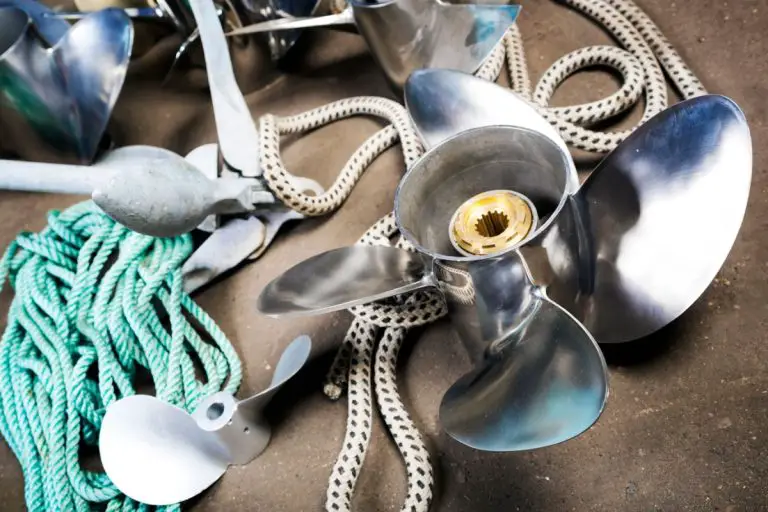
The Best Prop For A 50hp Mercury 4 Stroke (Explained)
You never want your prop to underwhelm the performance of your boat. So, you always want to have the best parts that optimize your boat’s performance. If you have a 50HP Mercury 4 Stroke, here’s the best prop for your 50HP Mercury 4 Stroke. The best props for your 50hp Mercury 4 Stroke engine are…
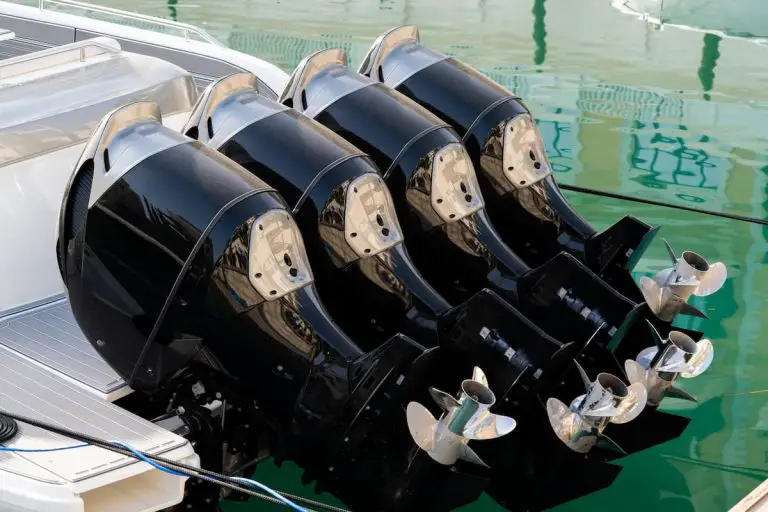
Can You Leave an Outboard Motor in Water During Winter? (Explained)
Outboard motors are popular propulsion methods for watercraft. However, unlike inboard motors, outboard motors are positioned and installed outside the boat. This can lead to several maintenance questions, especially those relating to storage. Although you can leave an outboard motor in water during winter, you should take precautions before doing so to avoid costly damages….
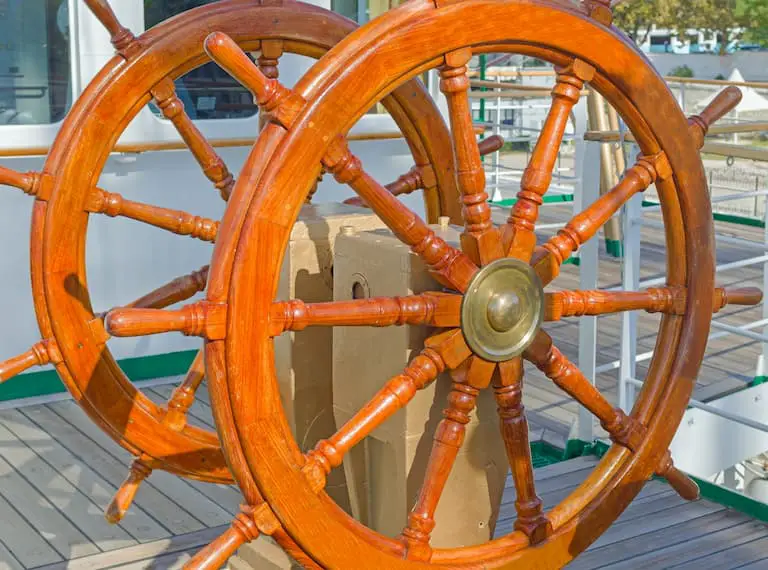
Why Some Sailboats Have Two Helms (Dual Helms Explained)
While most sailboats have a single helm with a steering wheel in the center, some larger sailboats or racing boats may have two helms. So, why do these sailboats have double helms? Are there any practical benefits of two helms on sailboats? Some larger sailboats have two helms as it helps with steering from different…
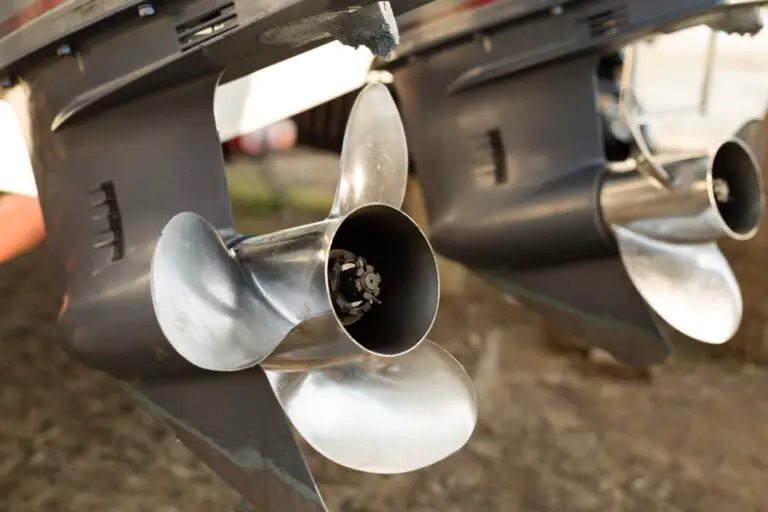
Should Boat Prop Spin Freely? To Spin or Not to Spin…
Navigating the world of boating can sometimes leave you with questions, particularly surrounding the maintenance and functionality of your vessel. One common question among boat owners is whether or not the boat prop should spin freely. Understanding how your boat propeller operates is crucial for safety and your vessel’s overall performance. Typically, when your boat…
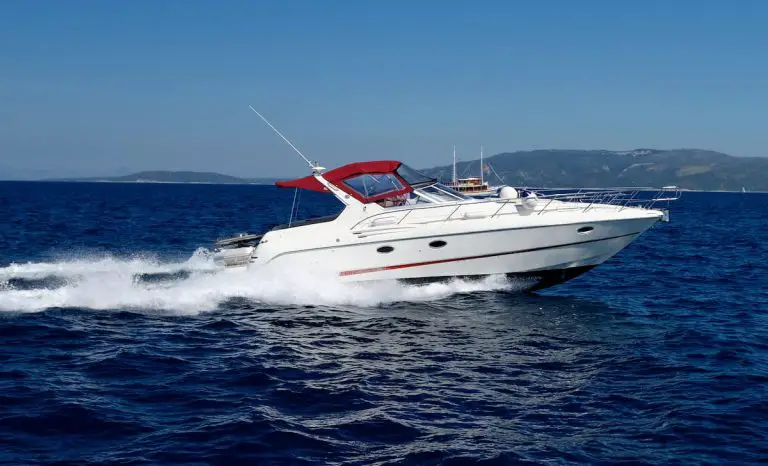
How To Clean a Boat Engine After Salt Water Use (6 Steps)
Even though sailing in salt waters is a highly coveted experience, taking your boat out to the sea or ocean can significantly damage your vessel’s structural integrity and longevity. One of the components that will suffer the most if left unattended for too long is the engine itself. For this reason, not only is it…
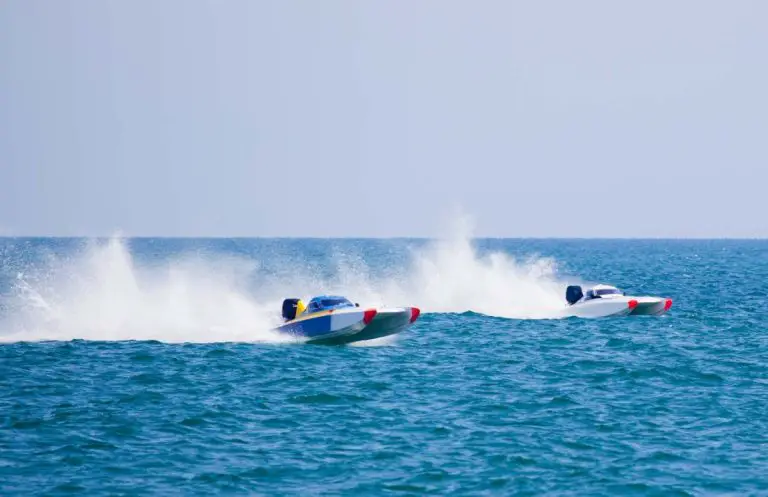
17 Things You Didn’t Know About Powerboat Racing (Revealed!)
Powerboat racing is a sport with thrill, adventure, and a little danger. But apart from the enticing characteristics of this water sport, there are facts about powerboat racing that many boat enthusiasts seem not to know. For instance, did you know that the windows used for powerboats came from F-16 fighter jets? If you are…

- (949) 704-6184
Always Keep Updated and Informed

Leave a review on google
- January 9, 2020
- By Mariners Insurance
Sailing Yachts vs. Power Yachts: What to Know About Owning the Two
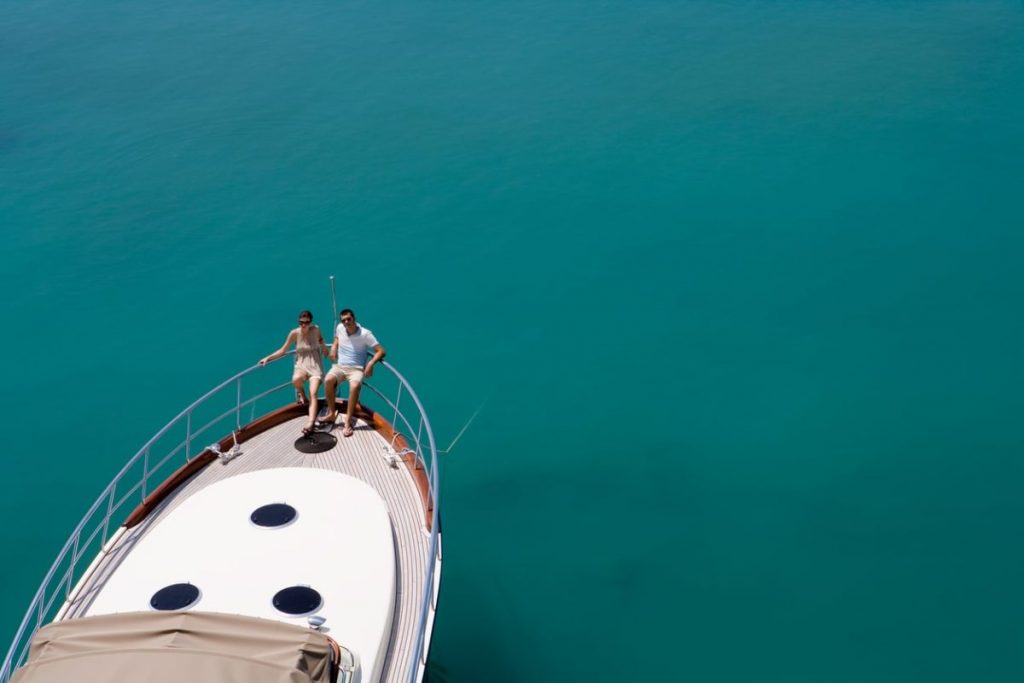
So, you’re looking to take the next step into yacht ownership. Are you thinking that you’d rather have a sailing yacht or a motor yacht? There are many considerations involved in yacht ownership, with one of the first being which type of yacht is the right one for you. There are certain considerations when deciding between purchasing a sailing yacht or motor yacht. Let’s take a closer look.
A Yacht’s Purpose
What are you using the yacht for? It’s probably for vacation, but how do you vacation?
Some people see yachting as the most practical way to travel from marina to marina, and from one mooring to the next. However, most boaters prefer the journey itself.
If your real fun begins once your feet are back on dry land, you will most likely enjoy the speed and functionality of a motor. However, if you love the salty breeze in your hair and the challenges of negotiating the elements, sailing yachts are the way to go.
Consider the Costs
Over a given distance, motoring is more expensive, as fuel prices add up, and more so if the conditions are less than favorable. The benefit is that travel times may be reduced.
On the flip slide, the wind in your sails is free. Even if you need to use the motor on some legs of your trip, you will certainly be saving money when sails come into action. So if time isn’t a matter of concern, sailing wins on cost.
Required Maintenance
Both yacht types require maintenance, be it anti-fouling paint, teak oils, or cushion replacements. Regular maintenance is normally not dictated by yacht type, but depends more on the size of the boat, how frequently it is being used and under what conditions.
With motor yachts, regular engine check-ups and oil changes will significantly increase the total maintenance fee. But without maintenance, mechanical failures become more frequent and quickly drive costs much higher than expected.
For sailing yachts, sails and rigging must be regularly maintained, and in many cases, replaced every 5 years .
Both yacht types require careful maintenance to operate along with yacht insurance for proper protection.
Eco-Friendliness
There is no doubt that using fossil fuels have a negative impact on the local ecology and marine life. And any time you crank up that speed, your emissions will only increase.
Sailing, on the other hand, is a much eco-friendlier option as there is virtually no gas used, and a tiny carbon footprint as a result.
Whether you opt to glide through the waters on a sailing yacht or choose to power your way to your next destination, it all comes down to personal preference. Both have their pros and cons, and neither is inherently better in all aspects .
No matter which type of yacht you choose to purchase, what really matters is getting time on the water and securing peace of mind with yacht insurance . Don’t wait until an incident occurs to think about coverage. Secure coverage before you take that first excursion, to ensure that no matter what happens, you and your new yacht will be covered.
About Mariners Insurance
Mariners General Insurance Group was founded in 1959 to protect boat owners and marine business clients. We are marine insurance experts and insure boats worldwide – in every ocean on the planet. Marine insurance is critical if you own a boat or nautical business. Trust the professionals with all of your Boat Insurance needs – trust Mariners Insurance. Call us at (800) 992-4443 any time you have questions or concerns about insurance for your vessel or marine business.
- Blog , yacht insurance
- Mariners General Insurance Group , Sailing Yachts vs. Motor Yachts , Types of Yachts , yacht insurance , Yacht Insurance policy , yachting
Recent Posts
Nighttime on the Water: Essential Tips for Safe Yachting After Dark
Hidden Dangers on the Water: Top Fishing Boat Risks and How to Avoid Them
Boat Transport, Storage & Liability: What You Need to Know About Marine Bailees
- Eco-Friendly Adventures: Top Reasons To Consider a Hybrid or Electric Boat
- Boating Boundaries: How Boat License Requirements Differ Across States
Similar Posts

Mariners General Insurance Group 206 Riverside Ave Suite A Newport Beach, CA 92663
Toll Free: 800-992-4443 Local: 949-642-5174 Fax: 949-642-0252 License #0D36887
Copyright ©2024 Mariners General Insurance Group All Rights Reserved
Our Insurance Crew Is Ready to Serve You
Security Verification
CALL US TODAY Fort Lauderdale: 954-467-9010 Punta Gorda: 941-505-2400
Fort lauderdale: 954-467-9010 punta gorda: 941-505-2400.
Sailboat vs Powerboat Breakdown by South Florida Experts
by Marine Diesel Specialists | Aug 22, 2023 | Blog , Yacht Life | 0 comments
Boating in South Florida is an unmatched experience. The region’s azure waters and abundant sunshine create an idyllic backdrop for maritime enthusiasts. The intricate network of waterways, from the Intracoastal Waterway to the Everglades, offers diverse exploration opportunities. Glide past iconic coastal cities, anchor in secluded coves, or discover vibrant marine life while snorkeling. With a year-round temperate climate, boating here is a seamless blend of relaxation and adventure. But you will need to decide which form of vessel is the right choice for you, the sailboat vs powerboat discussion must be had.
The team at Marine Diesel Specialists is ready to help make the decision easier for those interested in learning more, this handy guide is the perfect place to start. Our marine diesel experts in Fort Lauderdale routinely write insights such as these as a way to help those just getting into the world of boating with finding the perfect equipment for their skill set and desired time on the water.
What Is a Sailboat? The Older Design Thrives
When it comes to the world of boating, the sailboat stands as a timeless icon, harnessing the elemental forces of wind and water to navigate the open seas. When it comes to understanding the differences associated with sailboat vs powerboat vessels, a sailboat comprises a hull designed to glide gracefully through the water, while its distinguishing feature lies in its sails that make the functions of a boat of this kind possible.
Sails are the heart and soul of a sailboat, capturing the wind’s energy and translating it into propulsion. By adjusting the angle and tension of the sails, sailors can harness the wind’s power to navigate in various directions, including upwind—a feat made possible through the ingenious combination of physics and skillful seamanship.
A sailboat’s direction isn’t solely determined by the wind’s direction; it’s also influenced by its angle relative to the wind, known as the “point of sail.” Sailboats can sail upwind (close-hauled), across the wind (reaching), and with the wind behind them (running).
Modern sailboats are equipped with a range of sails—mainsails, jibs, genoas, and more—each with specific functions and designs tailored to different wind conditions and points of sail. The interplay between these sails, combined with the skipper’s expertise, dictates the vessel’s speed, course, and efficiency.
At its core, a sailboat embodies a beautiful synergy between natural elements and human ingenuity. It’s a testament to the harmonious dance between wind, water, and skill, crafting a maritime experience that’s as captivating as it is sustainable. The sailboat is one of the most popular forms of boating, the other worth mentioning being the powerboat.
What Is a Powerboat? A Newer Method Takes the Stage
A sailboat relies on the wind’s graceful embrace, while a powerboat, true to its name, harnesses mechanical might for propulsion. When considering different types of boats, the choice between a powerboat vs sailboat becomes pivotal. A sailboat’s elegance lies in its reliance on nature’s currents, its sails capturing the wind’s energy. On the other hand, a powerboat’s potency emanates from its engine-driven propeller, granting precision control over speed and direction. The powerboat can reach top speeds that simply are not possible for a sailboat of a similar size, the power of technology is represented in them perfectly. Though sailboats also tend to include a motor for moments when sailing is not viable, they are not able to capture the speed and efficiency of a vessel that was specially designed with the engine as its sole focus.
A powerboat comes in many different forms these days, they can be specially designed with fishing as a focus or be fine-tuned for speed alone. Whatever you choose, if you choose a powerboat, you’re going to have a faster time than you would with a sailboat. Sailboat vs powerboat isn’t just a matter of preference; it’s a reflection of individual inclinations and maritime ambitions. In the vibrant marine tapestry of South Florida, this choice becomes an extension of one’s connection to the water, a choice that can shape the nature of your aquatic journeys.
What Type of Boat to Get for Your South Florida Adventures
Navigating the captivating waters of South Florida opens a choice between these two distinct yet equally enticing paths: the sailboat vs powerboat vessels commonly seen in the water around the area. To decide which vessel resonates with your boating aspirations, consider several factors.
First, ponder your connection to nature. Sailboats, with their reliance on the wind’s grace, offer a serene communion with the elements. Powerboats, driven by mechanical prowess, provide autonomy and precise control over your journey.
Your intended activities also play a role. Powerboats are versatile, catering to water sports, fishing, and leisurely cruising. They swiftly cut through the waters, delivering exhilarating experiences. Sailboats, with their slower pace and focus on the wind’s rhythm, are ideal for those seeking contemplative voyages and a closer connection to the sea.
Consider your comfort level with maintenance. Powerboats often necessitate engine upkeep, while sailboats require attention to sails, rigging, and navigation skills. Budget is a crucial factor too, as powerboats tend to incur higher fuel and maintenance costs.
Ultimately, choosing between a powerboat and a sailboat is a personal journey. It reflects your affinity for nature, your penchant for adventure, and your desire for connection. Both vessels embrace the allure of South Florida’s aquatic realm; the choice lies in which vessel resonates most profoundly with your nautical dreams.
Our Professional Marine Services Help All Types of Boaters
For those in pursuit of adept boat engine maintenance, look no further than our marine rebuild specialists—your ultimate destination. We take immense pride in delivering comprehensive boat engine care coupled with premium-grade products . As authorized distributors, we’re enthusiastic about offering the exceptional MAN diesel marine engines, renowned for their reliability and performance. Our range transcends mere products; it’s a distinctive assortment covering all conceivable necessities. Tailored to your requirements, our marine diesel services and products provide an integrated solution. Whether you’re in Fort Lauderdale or Punta Gorda, our Marine Diesel Specialists and Gulf Coast Diesel Service experts place paramount importance on customer satisfaction. From guiding you in engine selection to conducting dependable repairs and maintenance, our adept professionals offer personalized guidance.
Our informative marine engine blog serves as a treasure trove of insights from specialists, empowering informed decisions on engine care, as well as valuable insights like this article on sailboat vs powerboat vessels. Get in touch with our marine industry experts to explore our offerings and immerse yourself in our unwavering commitment to excellence. Your boat’s engine deserves nothing short of the best.
Related Readings
- How Does a Boat Engine Work?
- Choosing a Boat that Requires Minimal Engine Maintenance
Our Marine Diesel Specialists offer a variety of products and services to provide marine diesel solutions in Fort Lauderdale and Punta Gorda. Our authorized MAN Engine dealers can offer expert maintenance, repair, and survey services, as well as complete engine, transmission, and generator overhauls. If you are seeking top-quality marine diesel solutions, products, or services, don’t wait to contact our Marine Diesel Specialists and Gulf Coast Diesel Service.
Submit a Comment Cancel reply
Your email address will not be published. Required fields are marked *
Save my name, email, and website in this browser for the next time I comment.
- Name * First Last
- Questions & Comments
- Comments This field is for validation purposes and should be left unchanged.
- Standard Engine Parts
- Marine Fuel System Solutions
- South Florida Boat Fuel Filters
- Oil Filters
- Starting Air System
- Marine Engine Cooling System
- Heat Exchanger Caps
Other Product Lines
- Citgo, Mobil & Shell Oil
- K&N Filters

- Forum Listing
- Marketplace
- Advanced Search
- About The Boat
- Boat Review Forum
- SailNet is a forum community dedicated to Sailing enthusiasts. Come join the discussion about sailing, modifications, classifieds, troubleshooting, repairs, reviews, maintenance, and more!
Sailboat cost vs Powerboats
- Add to quote
I''ll skip the history of how this question came to bug me, but why is it that older powerboats (like a Downeast type or even a small trawler type) are so much more expensive than a comparable size sailboat? >Lets say 10-15 years old >powerboat speeds less than 15 knots (250-300hp, inboard diesel) >maybe around 30 feet LOA for either boat I realize a powerboat will have a MUCH larger engine/drivetrain than a sailboat, but a sailboat will have all the rigging & sails that the powerboat will not. The costs of either are about a wash. A powerboat hull would likely need a greater degree of structural support than a sailboat(?) to deal with the higher speeds/stresses in rough water. This isn''t to say that a sailboat doesn''t have to deal with large degrees of stress. Many power & sailboats have very similar systems with regard to shorepower/battery banks/charging, galley systems, hot/cold pressure water, head/shower, hatches, pumps, berths, ground tackle, electronics.....and yet when you compare the two it seems powerboats can easily run 50-150% more $$ than a comparable size(displacement) sailboat. It seems you can get alot of (sail)boat for a very reasonable amount of money. Why so much (apparent) difference?
My first thought is that if you take, say, a 30'' sailboat and a 30'' powerboat, the amount of material needed to build the powerboat is substaintially more that needed for a sailboat typically.
I would agree that you need to compare a 30 foot power boat to a 38 to 42 foot sail boat, maybe a 36 in a modern wide body sail boat. Gene
There''s an old expression that boats are sold by the pound, so as the previous posters have alluded, try to compare powerboats and sailboats of approximately equal displacement. Having said that, to do it right, you should subtract the weight of the sailboat''s keel and adjust the price for the cost of the installed keel.
I had an interesting(to me at least)exchange with Jeff H about the sailboat market. I believe that even in ''good times'' sailboats are a buyers market. Maybe the powerboat market is more balanced or even a sellers market? I might be interesting to compare new power to new sail on the price per pound basis.
I am not sure that I agree that the current sailboat market is a Buyers market. In a general sense over a long period of time sailboats seem to sell for pretty much what they cost new (without fit out) and seem to hold their value as long as you maintain them. For a period of years now I have tracked certain models that I like and that I think of as good indicator models and their asking prices seem to be going up (quite sharply in some cases) and they seem to be selling fairly quickly. That sounds like a sellers market. Counter to that, there seems to be a bigger backlog of Hunters, Catalinas, Bavarias and Beneteau Oceanis and number series boats so there may be a bit of a buyers market with the higher production value oriented builders. Counter to that there actually seems to be a shortage of good, clean, higher quality boats on the market than there had been so I guess it depends on what you are trying to buy. Jeff
Sorry, Jeff for the implication you agree with my pessimistic view of the used sailboat market. Its only an academic question with me because when I find my boat I''m going to buy it regardless of where the market seems(to me)to be going.
Sail vs Power - The difference is not cost but psychology Everything I have read over the years theorizes that sailboats and powerboats cost about the same to own over the long haul. The psychology of the matter seems more germane to the comparison of propulsion systems. Sailors are an entirely different species of water mammal from power boaters. They just happen to share the same ocean. RSKAUG demonstrates my point nicely: "Its only an academic question with me because when I find my boat I'm going to buy it regardless of where the market seems(to me)to be going."
Perhaps this comment is a bit naive and also geographically biased, but it seems that power boats are more in demand. Playing into the basics of economics. From where I sit, it seems that sailors are pushed aside by gas guzzling stink potters. Just my opinion and I am sure that those who disagree will let me know Jason
Powerboats have very expensive engines. Don't know enough about them to make an educated guess, but figure the cost of the engine must be half the cost of the boat (maybe more ??). Maintaining them (the engines) is a lot of work, costs a lot of money. So I think that the amount of money invested in a powerboat is quite a bit greater on a foot-by-foot basis, both at initial purchase, and for ongoing maintenance. Powerboating is easier than sailing. You turn a key and go, don't have to hoist, pull, tack, gibe, reef, hike, etc. The first few times out sailing on your own can be frustrating, if you are not comfortable on the water to begin with, it can be scary. So on one hand the (power)boats cost more to buy and maintain hence owners have made a bigger investment in them than a comparably sized sailboat, and on the other hand, they are easier to deal with than sailboats. I think the former accounts for their higher price, and the latter factor accounts for their popularity.
I think the "casual" boater market took quite a hit last year. fuel prices, unsure economy all part of the mix. However, higher end craft remained steady.. both power and sail. Proves out "if you have to ask, you can't afford it." Some powerboaters even looked longingly at our 30.00 fuel bill for the month and were talking amongst themselves about "trying out this sailboat thing". We've found if its a Cuddy cabin couple, the female of the crew love the sailing features. You know, quiet, stuff like that.
sailingdog said: Yes, my favorite moment was when I was talking to one of my marina neighbors. He told me it cost him $1500 to fill the tanks on his boat, "Empty Pockets". I told him that it cost me $25 to fill the two tanks on my boat, and that I would probably have most of that at the end of the season, which I did. His fuel bill for the season was over $10,000. Ouch. Click to expand...
I'm new to this site and I've been royally entertained by what I've read so far. I'll be back on the water this year in my 35' Cape Island I just purchased from Crown Assets for $817 including tax!! I will be adding a dual fuel option, my diesel will run excellently on used cooking oil, imagine, an ex fisherman that smells like french fries! :laugher At less than one gallon per hour and veggy oil costing about $2 a gallon should be fairly economical to enjoy the freedom of my own wheelhouse. The supply of similar vessels is virtually unlimited and while one doesn't expect deals like I got, these old Capes will seldom let you down. No, she's not "pretty" like a factory built sail boats but she has her own karma which fits me like a worn glove. After 35 years working in and around engine rooms I find the thumper in the basement very reasuring, and have learned as well that a fisherman might beat you up but she won't drown you. Viva stinkers:laugher Dumah, Halifax, Nova Scotia
I think it's supply and demand. Sailboats last a very long time, and aren't as popular as they used to be- there are a lot more sailboats on the market than buyers, and most of the ones that aren't on the market are sitting unused. I can't figure out why sailing isn't more popular. I have less money in my Catalina 22 than some of my friends have in their laptop computers or video game systems. I can't imagine anyone would prefer a weekend playing video games indoors to a weekend sailing!
a few things come to mind, as mentioned above the PB will need a lot more material to fabricate, given that SB/PB of the same size will probably see the PB significantly beamier. a lot of those boats have a fly bridge, and while im not sure the $ it would stand to reason that that redundancy isnt cheap. also a lot of that size boat will have a genset, which IIRC new at dealer cost is around 5k.
- ?
- 174.2K members
Top Contributors this Month

Sailboats vs Powerboats

Table of Contents
Are Sailboats Better Than Powerboats? Sailboats vs Powerboats
Boats are the oldest vessels known to mankind, dating back to between 8200 and 7600 BC. According to Wikipedia , the first boats were nothing more than dugouts carved from trees, known as Pesse canoes. Eventually, people learned to harness the power of the wind, which brought the sailboat to nautical dominance. Since then, the evolution of watercraft has led to powerboats that are equipped with inboard or outboard motors. While some people prefer the convenience and power of a gasoline-powered engine, others prefer to sail with the wind at their back. Which one is the right boat for you?
Both boats have advantages and disadvantages. A more hands-on approach is required for sailing, while powerboats typically require less maintenance. Sailboats are generally designed for relaxation, while powerboats are built for speed. If space is a concern, sailboats usually have much less available deck space than powerboats. Sailboats also require much more skill and training to operate. Powerboats are much more convenient than sailboats. However, they are also much less quiet. Sailing is also more cost-efficient than owning a powerboat.
In this article, we are going to weigh the advantages of owning a powerboat versus owning a sailboat. Whichever vessel you choose, it will simply be a matter of personal preference. The type of experience you want to get out of your watercraft will determine if you choose to go with a sailboat or a powerboat. I will also include a bonus section that will give you tips and suggestions on buying the perfect boat for you.
What Are the Advantages of Owning a Powerboat?
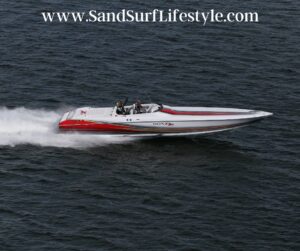
Convenience is also an advantage of owning a powerboat, as you can simply hop in the boat and take off. Whereas, several steps must be taken with a sailboat before you can set sail. Because motorboats tend to have a smaller hull than sailboats, they are also capable of getting into smaller bodies of water. On the contrary, sailboats tend to limit where you will be able to go. Powerboats are also much easier to get in and out of docks and marinas than sailboats.
If you are concerned about how much room your boat will have, another advantage of owning a powerboat is that they are typically much more spacious than sailboats. These boats have a significantly larger amount of deck space, as they do not have a large amount of sailing hardware. More available space on your boat means that you can bring more friends or family with you on your boating adventures. There will also be more room for any supplies you may need, such as life vests and coolers.
Perhaps the most significant advantage of owning a powerboat over a sailboat is that it requires sufficiently less training to operate a motorboat. Because you are reliant on wind power and direction, sailing is a skill that requires many years of dedication to perfect, while operating a powerboat can be learned quite quickly. Sailing is also a skill that requires a more hands-on approach than operating a motorboat.
If you are the type of person that places a priority on freedom, owning a powerboat is the right choice for you. One of the best aspects of owning a powerboat is that you have the freedom to go anywhere in the world you desire. As long as you have an adequate fuel supply, a powerboat can take you anywhere you want to go. A sailboat requires wind and good weather conditions, which may not always be available.
What Are the Advantages of Owning a Sailboat?
Yes, it’s true. There are many advantages to owning a powerboat. However, there are also plenty of advantages to owning a sailboat. One of the best advantages that come with owning a sailboat is that these vessels are not dependent on fuel, which means that you won’t have to cut your trip short because your fuel supply is running low. All you need to sail as far as you wish is to have the wind at your back.
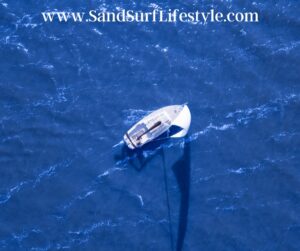
Sailing is known for rejuvenating your mind and your spirit. The calming effects that sailing has on an individual have been compared to doing yoga. Owning a sailboat also comes with the peace of mind of knowing that you are not causing nearly as much pollution as motorboats, which is much better for the environment. It could be said that when you purchase a sailboat, you are making an investment in the future of the planet.
If a calm and relaxing day on the ocean is your idea of fun, a sailboat may be the perfect fit for your boating needs. Because sailboats do not rely on noisy motors to power them, they are much quieter than powerboats. For this reason, sailboats can provide a much more relaxing experience than boats powered by noisy motors. However, most sailboats come equipped with motors, just in case you find yourself out on the ocean with no wind in your sails.
If cost is an issue, sailboats are usually much less expensive than powerboats. You can purchase a second-hand sailboat for roughly half the price you will pay for a powerboat. While sailboats are usually larger than powerboats, the reason that they are less expensive is that powerboats come with outboard motors, which can add a substantial amount to the price tag of your boat. There are also significantly fewer fuel costs associated with sailing than with operating a powerboat.
Do you know what the different types of keels on a sailboat are? Learn more here .
Boat buying guide .
Purchasing a boat is a substantial investment. As with any large purchase, you want to make sure that you get the boat that is the right fit for you. The first thing that you should consider when buying a boat is what type of activities you like to do on the water. Are you the type of person that wants to go fishing and skiing, or are you the type of person that wants a calm and relaxing day on the ocean?
The next choice you’ll have to make is perhaps the most important. Of course, I am referring to whether you should purchase a new boat or a secondhand boat. Some boats tend to hold their value better than others and are also able to withstand the wear and tear that some boat owners will put them through regularly. When you are purchasing a boat, it is also important that you keep in mind what material the boat is made of. Wooden boats do not last nearly as long as boats made from aluminum or fiberglass.

In conclusion, the type of watercraft you choose will depend entirely on the experience you want to have. If you want the convenience and speed that owning a powerboat provides, then that is the right choice for you. However, if you want a calming experience that can rejuvenate and refresh you, a sailboat is the perfect fit. Powerboats are easier to maintain and have more available deck space, but sailboats are much quieter and also better for the environment. Whatever type of vessel you choose, whether it is a sailboat or a powerboat, I’m sure that it will be a perfect fit for a day of fun.
What is faster, a two-stroke or a four-stroke outboard motor? When it comes to outboard motors, two-stroke motors and four-stroke motors both have approximately the same fuel economy and similar speeds. However, two-stroke motors are lighter than four-stroke motors and tend to accelerate faster. Four-stroke motors are much quieter than two-stroke motors and have more torque.
What are the best brands of outboard engines? There are several different brands of outboard motors available to purchase. However, what you mean to be a perfect fit for you may not be a great fit for others. Luckily, the website boats.com has composed a list of the best outboard engines. They are:
● Suzuki DF25
● Yamaha F25
● Mercury 75/90/115
● Torqeedo Deep Blue
● Suzuki DF90
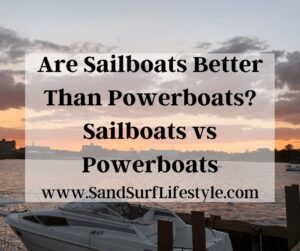
Please note: This blog post is for educational purposes only and does not constitute legal or medical advice. Please consult a legal expert or medical professional to address your specific needs.
Aloha! My name is Shawn and I Love the Beach and Ocean! From surfing to beach sports to boating and fishing I like it all. More importantly, I Love the people I get to meet who also share a passion for the sand and surf. Living and growing up near the ocean my heart has always been connected to the beach and its lifestyle. I wish to share my experience with those around the world. Mahalo (Thank You) for visiting and enjoy your stay here on my site!
Recent Posts
Sailing Right of Way
Navigating the open waters on a sailboat can be an exhilarating experience, but it's essential to understand the rules that govern the right of way. These rules, steeped in tradition and designed to...
Best Surfing Countries
Surfing isn't just a sport; it's a way of life, a connection with nature's raw power, and a thrilling adventure that transcends borders. While iconic surf spots exist on nearly every continent, some...

IMAGES
VIDEO
COMMENTS
Sailboats require a more hands-on approach, which many people prefer. Yet, powerboats have less maintenance and more speed. Which kind of boat you choose depends entirely on what kind of experience you want to have. Powerboats are easier to operate, and they require a little experience. But, they are costly to keep running and you're reliant ...
The decision between owning a sailboat vs. owning a powerboat can be a tough choice. The marina costs for both will be the same (depending on their size), and they both will have maintenance expenses related to their motors and other equipment. The real differences lie in how you intend to use it and what kind of experience you hope to have on ...
Sailing is typically less expensive than powerboating. The initial purchase price of new luxury sailboats ranges from $100,000 to over $1 million, while ordinary powerboats are priced between $100,000 and $200,000. Meanwhile, larger and more luxurious powerboat models easily exceed $1 million. The cost of insurance for a sailboat is also lower ...
Speed. For liveaboards, speed usually isn't a priority, but you should know what to expect from your purchase. Yes, powerboats are generally faster than sailboats. The average cruising speed of a sailboat is somewhere around 6 - 8 knots, while powerboats can easily go around 20 or more if you put your foot down.
For a 30-foot sailboat expect to pay around $350 to $400 for the dry storage fee. You can also pay to store your boat in a marina slip on a nightly, monthly, or seasonal basis. The cost is usually paid on foot. The cost of storing your boat at a marina can range from a few hundred to a few thousand dollars every year.
On a quiet day, most sailboats can reach speeds of 7 knots, whereas powerboats may reach speeds of 15 to 20 knots. Powerboats have more interior and deck space than sailboats. A powerboat also has more facilities, such as larger cabins and stand-up galleys. This, of course, depends on the kind of powerboat you will purchase.
Maintenance: Powerboats typically require more maintenance than sailboats, particularly when it comes to engine upkeep. This can result in additional time and expense for boat owners. Sailboats vs. Powerboats: Factors to Consider. When deciding between a sailboat and a powerboat, there are several factors to consider, including:
The average annual maintenance cost of sailboats is between $2,000 - $3,000, but larger boats can cost up to $7,000 due to other recurring costs like docking and insurance fees. It really depends on the type of boat and its usage. For those on a budget, it is possible to maintain a boat for just $1,000 per year. 6.
Choosing between a powerboat and a sailboat can be a challenging decision. These two types of water vessels offer distinct experiences and have key differences in their features and capabilities. ... Powerboats require regular engine maintenance and fuel refills, which can add up over time. Sailboats, on the other hand, have fewer moving parts ...
Look at the sails and the way the boat is heading. If the sails are filled and puffing out, the boat is heeled over, and it isn't heading into the wind, the boat is most likely under sail. If the sails are sagging or flapping, the boat isn't heeling, and one of the overflow pipes at the stern is emitting a stream of water, the sailboat is ...
There are noticeable differences between sailboats and powerboats. While a sailboat relies on the wind to sail it along, a powerboat uses an engine to propel it through the water. Sailboats can also be equipped with engines just in case the sails are damaged. Like most vessels, sailboats and powerboats have their pros and cons.
Yes, I was a happier person with a rudimentary sailboat. And to answer your question, sailboat vs. powerboat maintenance, fundamentally, the more stuff you have, the more stuff will go wrong. All things being equal, sailboats have a lot of stuff above the deck to maintain that powerboats do not. 6.
Power boats and sailboats are the two styles of boat you're most likely going to be choosing between when you're in the market for a vessel to spend your free time on. This can be tough since there really is no correct answer to the sailboat vs. powerboat debate but knowing the differences in benefits between the two is a must before making ...
A sailboat is cheaper to purchase and to run than a powerboat. A second-hand sailboat is about half the price of a powerboat. The engines on powerboats are a lot more expensive than those on sailboats, which adds to the maintenance cost. Fuel consumption of a powerboat can range between 5-30 gallons ($20-120) per hour.
The big differences between sailboats and powerboats lay mostly on safety, costs, and dependability. Firstly, a sailboat is propelled through the water by the wind, whereas a powerboat is propelled through the water by an engine. In the event that the sails are damaged, sailboats can be equipped with engines.
Change the oil and filter of the engine. Clean the thru-hull. Clean the siphon break. Fill up coolant and antifreeze if needed. Check pump, impeller, and raw water strainer. Finally, let's see the annual maintenance of your sailboat's engine: Test the batteries. Check the diesel tank for damages.
The Powerboat-Sailboat Encounter: Identifying the Give-Way Vessel Navigating encounters between powerboats and sailboats is a fundamental aspect of marine safety. In general, according to the International Regulations for Preventing Collisions at Sea (COLREGs), the powerboat is usually the give-way vessel when encountering a sailboat that is ...
But without maintenance, mechanical failures become more frequent and quickly drive costs much higher than expected. For sailing yachts, sails and rigging must be regularly maintained, and in many cases, replaced every 5 years. Both yacht types require careful maintenance to operate along with yacht insurance for proper protection. Eco-Friendliness
A sailboat relies on the wind's graceful embrace, while a powerboat, true to its name, harnesses mechanical might for propulsion. When considering different types of boats, the choice between a powerboat vs sailboat becomes pivotal. A sailboat's elegance lies in its reliance on nature's currents, its sails capturing the wind's energy.
I would agree that you need to compare a 30 foot power boat to a 38 to 42 foot sail boat, maybe a 36 in a modern wide body sail boat. ... Sail vs Power - The difference is not cost but psychology ... boating, cruising, racing & chartering. Come join the discussion about sailing, destinations, maintenance, repairs, navigation, electronics ...
If you want the ability to plan around a guaranteed day on the water, then a powerboat might make more sense when deciding between a powerboat vs. sailboat. 4. Sailboats are slower but can be more engaging. Speed is a big part of a powerboat's appeal. A powerboat's speed is necessary if you want to water ski or quickly get to your fishing spot.
A more hands-on approach is required for sailing, while powerboats typically require less maintenance. Sailboats are generally designed for relaxation, while powerboats are built for speed. ... In this article, we are going to weigh the advantages of owning a powerboat versus owning a sailboat. Whichever vessel you choose, it will simply be a ...
Foot-for-foot, I think you get more value in a sailboat and a sailboat for a given length tends to be cheaper than a equivalent powerboat. Yes, sails, engine maintenance and rigging can be expensive but they tend to be long term costs over a period of several years.